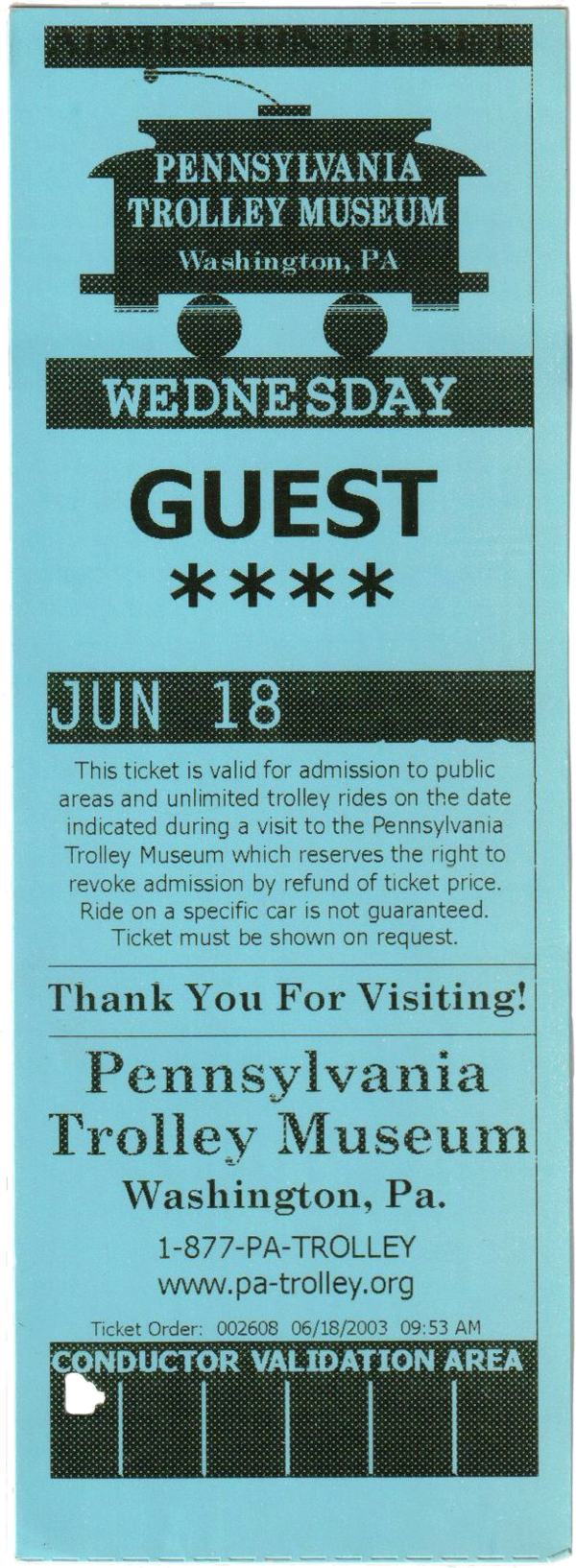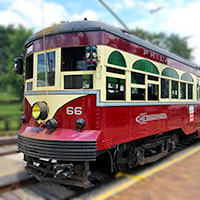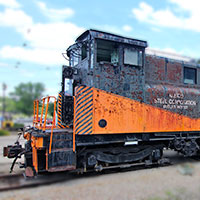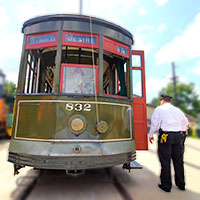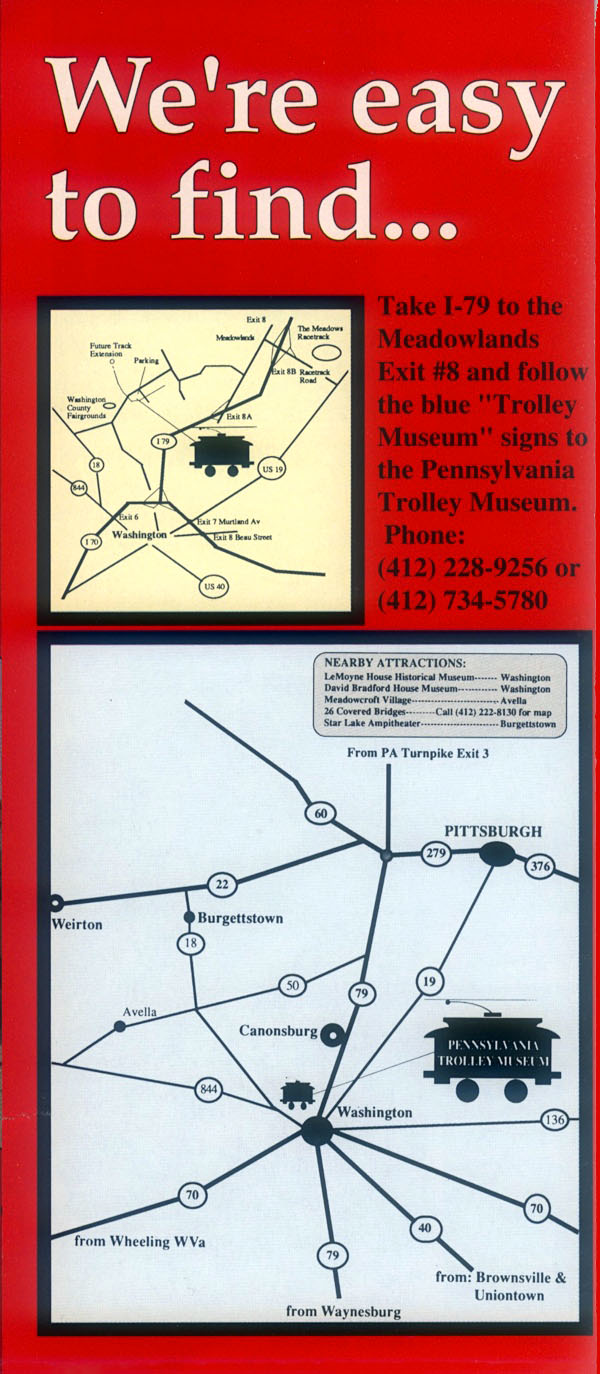
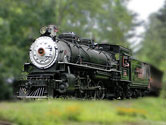






Museum
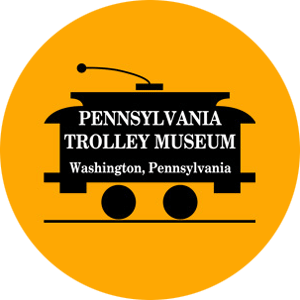 |
Pennsylvania Trolley Museum"Keeping the trolley experience alive for generations to come" |
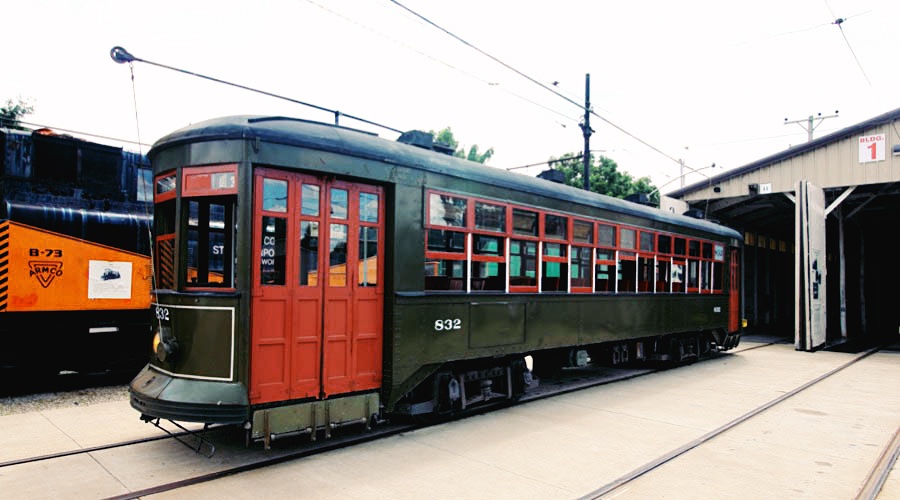
Washington, Pa / Jul 2019 / RWH

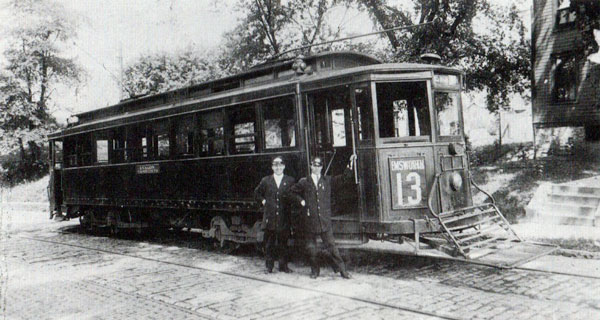
 ne of the vital forces in the development of American cities was the arrival of the electric streetcar at the end of the nineteenth century. Its quiet, efficient propulsion was far ahead of the transport of the time, and its higher speeds made it possible for people to live much farther from their work than when they had to depend on walking or slow horse cars of that era. Cities expanded along the streetcar routes built out from their centers by promoters, and many of today's thriving suburban communities owe their existence to the streetcar. The streetcar served the city well, through two world wars and a depression, before affluence, America's love af- fair with the automobile, and manipulation by a consortium of high way interests, caused the decline of public transportation and the gradual disappearance of the streetcar.
ne of the vital forces in the development of American cities was the arrival of the electric streetcar at the end of the nineteenth century. Its quiet, efficient propulsion was far ahead of the transport of the time, and its higher speeds made it possible for people to live much farther from their work than when they had to depend on walking or slow horse cars of that era. Cities expanded along the streetcar routes built out from their centers by promoters, and many of today's thriving suburban communities owe their existence to the streetcar. The streetcar served the city well, through two world wars and a depression, before affluence, America's love af- fair with the automobile, and manipulation by a consortium of high way interests, caused the decline of public transportation and the gradual disappearance of the streetcar.
Pennsylvania Trolley Museum
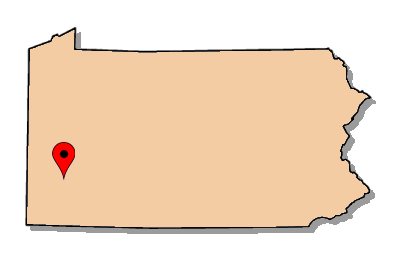

ocated south of Pittsburgh in the suburb of Washington, the Pennsylvania Trolley Museum features a large collection of streetcar, interurban, and industrial electric traction equipment representing operations from around the Commonwealth. Originally developed by three local trolley aficionados as the Pittsburgh Electric Railway Club, in 1963 their assemblage of cars became the Arden Trolley Museum. An ever-expanding collection of equipment and physical footprint prompted a final renaming in the early 1990s, and today the museum boasts a continuous 5' 2.5" "Pennsylvania broad gauge" running track with turnaround loops at each end, passing sidings, and several car barns for storage and display. A battalion of volunteers operate the trolleys and conducts tours of the facilities. The museum sits adjacent to the Pittsburgh & Ohio Central mainline. Of special interest to HawkinsRails, the museum owns a New Orleans streetcar, Pearly Thomas #832, formerly used on various lines in New Orleans including the Desire line — featured in the film A Streetcar Named Desire based on the play by Tennessee Williams.

collection
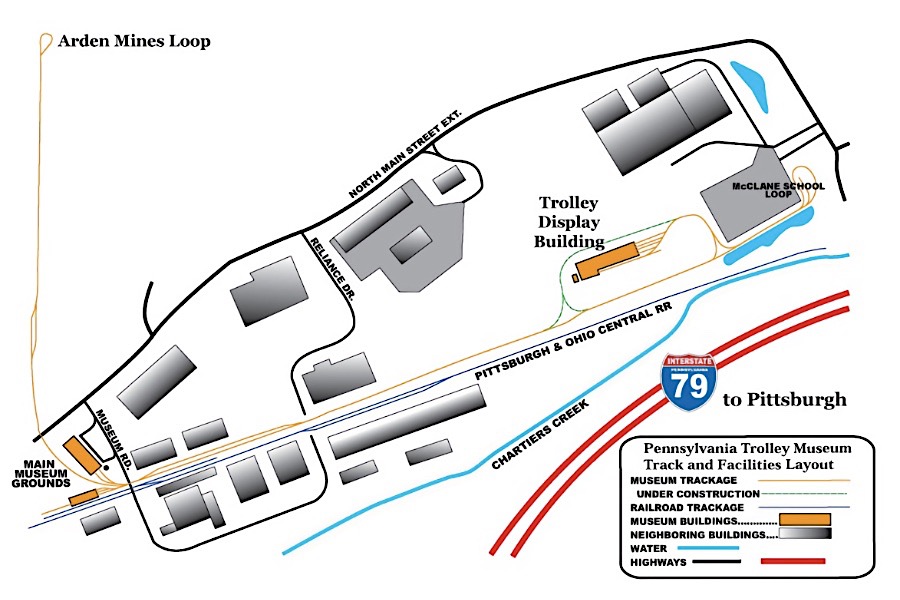
museum map / web

Click to see Pennsylvania Trolley Museum plotted on a Google Maps page
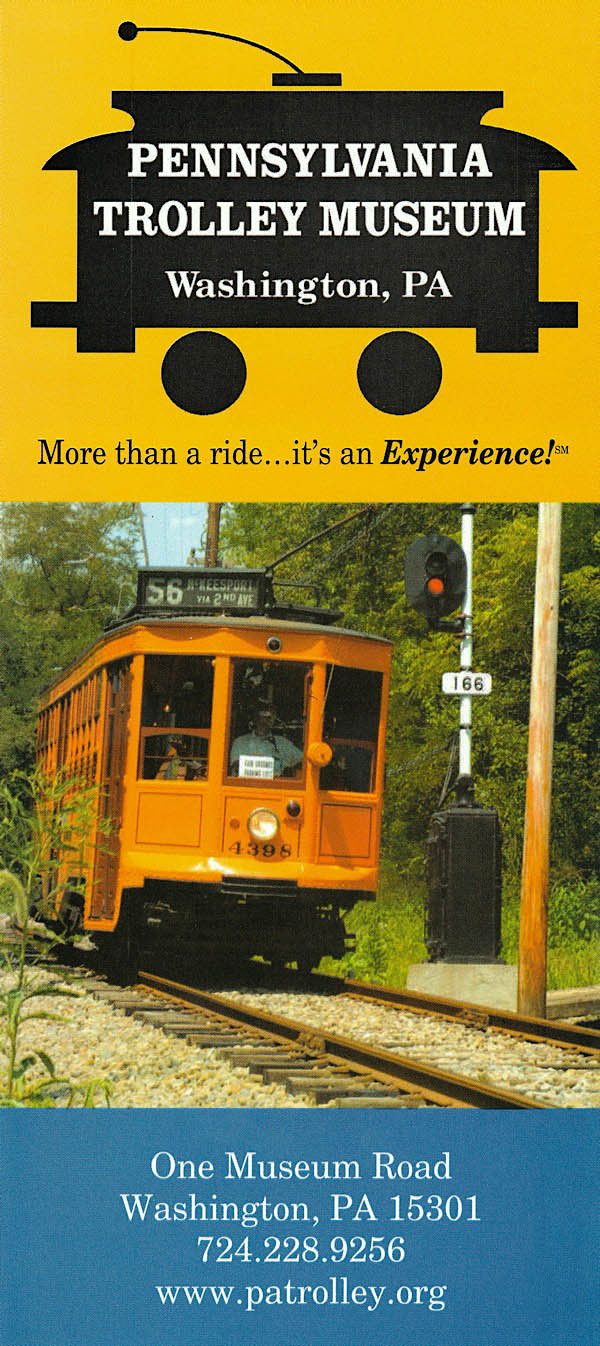
collection
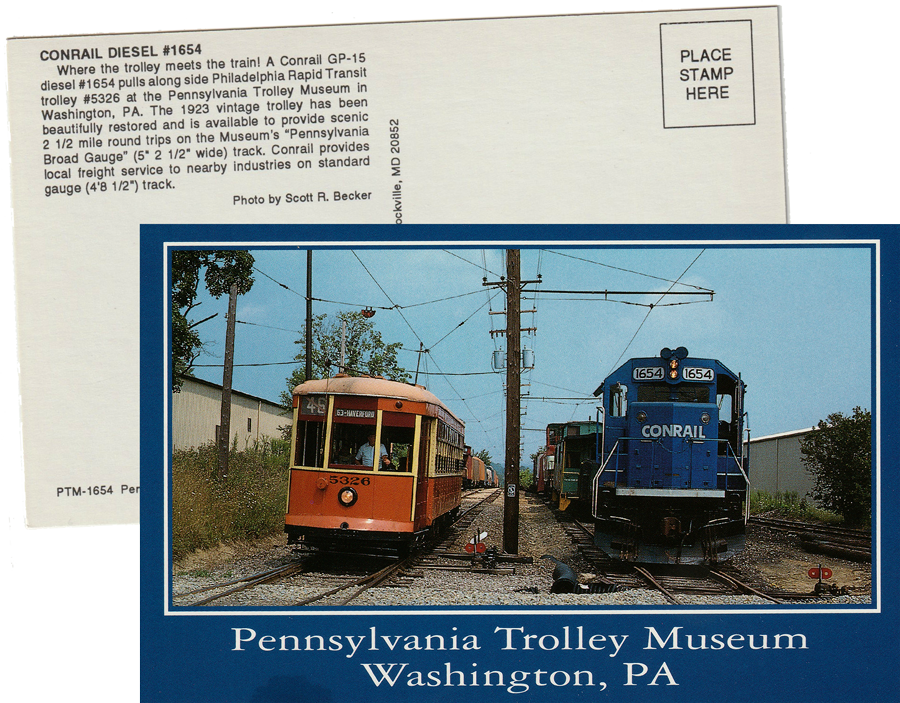
postcard / collection

In 1953, the Pittsburgh Electric Railway Club, formally organized as a nonprofit corporation. They purchased a 2,000-foot section of railway line of the Pittsburgh Railways Company's recently abandoned Washington interurban trolley line near the Washington County Home in Chartiers Township. On February 7, 1954, the museum's first three cars were run to the site on their own power, just before the Washington line was dismantled. During the next nine years museum volunteers constructed storage tracks and a car house to protect the trolley cars, rebuilt nearly a half mile of track, and set up a diesel generator to provide the power necessary to operate the cars. The Arden Trolley Museum opened to the public in June 1963, providing visitors with short demonstration trolley rides and an informal tour of the car house.

collection
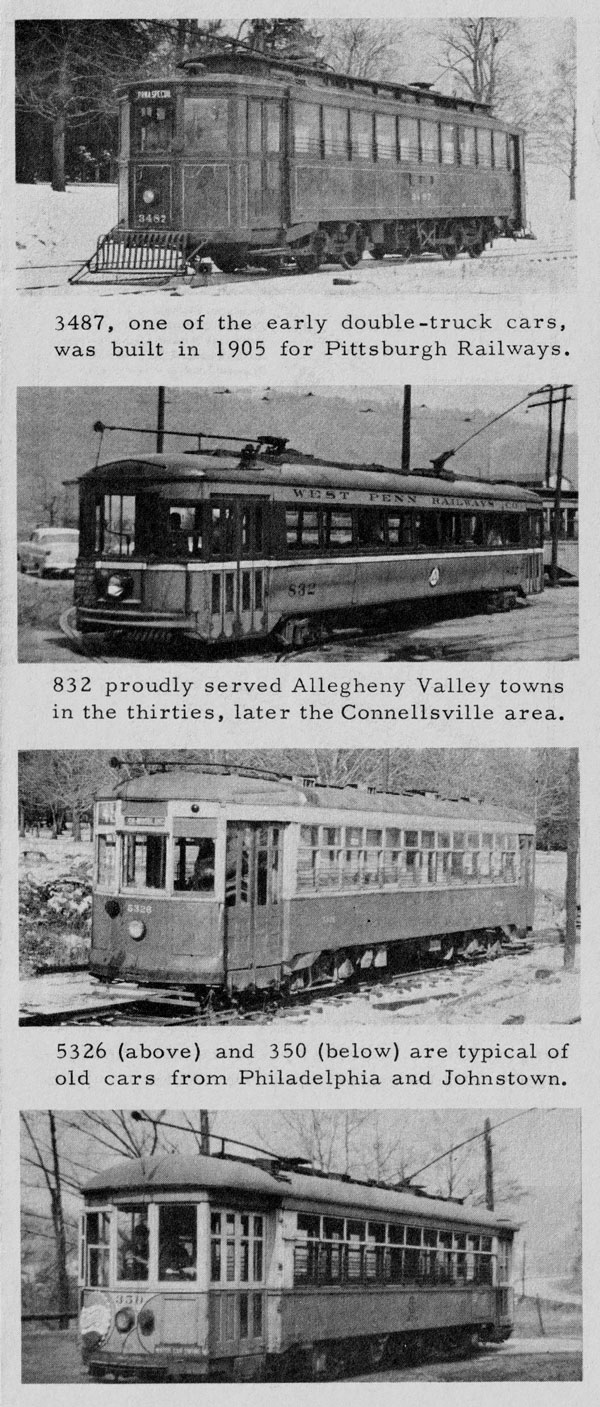
1964 clipping / collection

1967 advertisement / collection

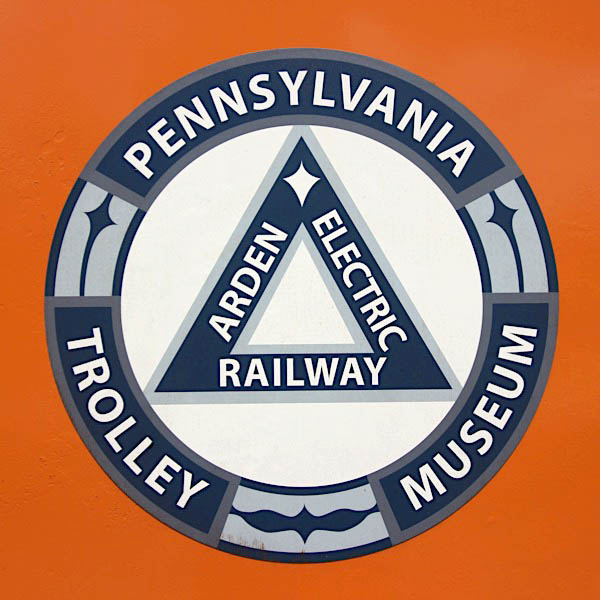

RWH

See also these related Pittsburgh scrapbooks:
Publications
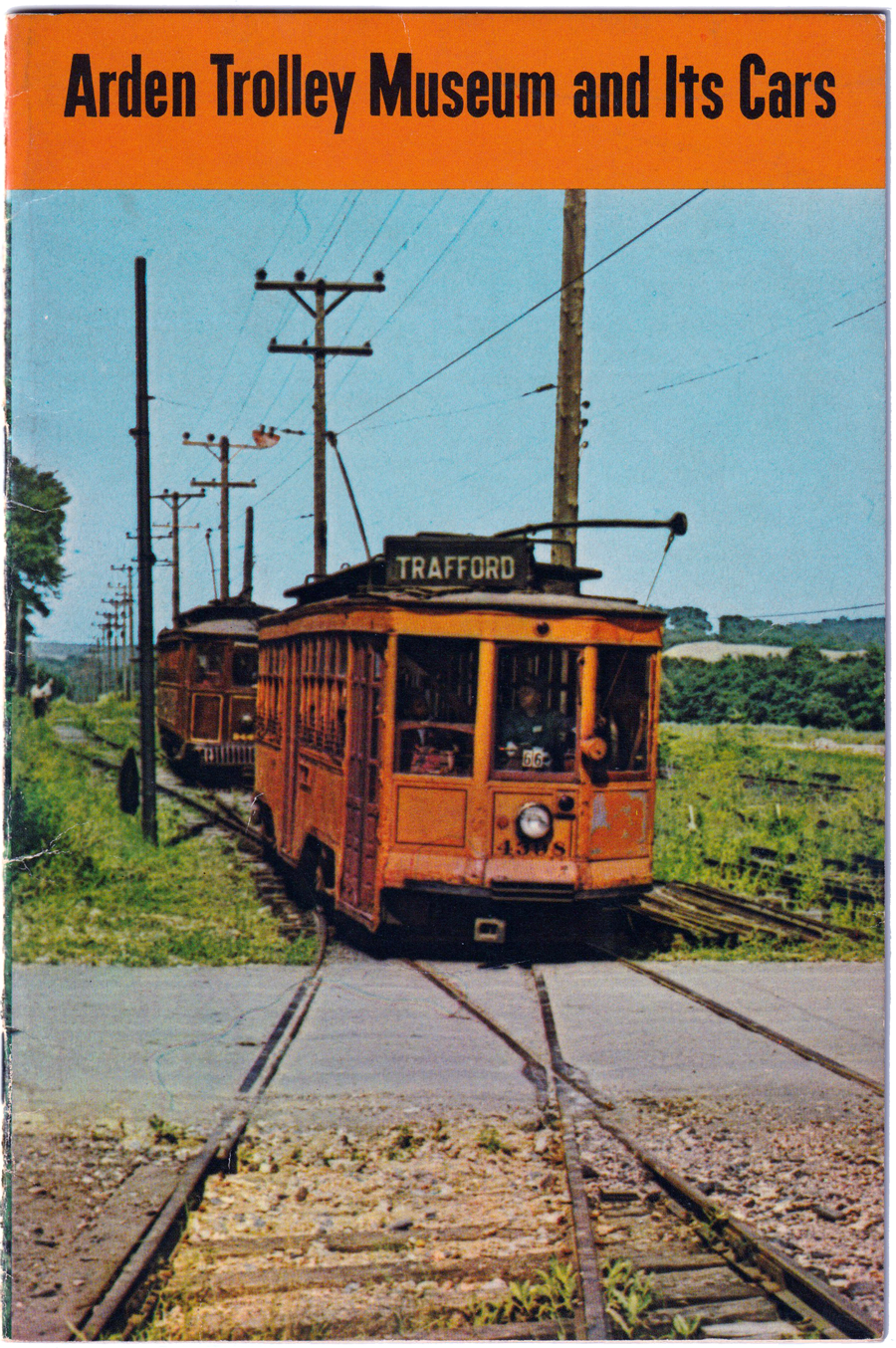
1967 historical booklet / collection
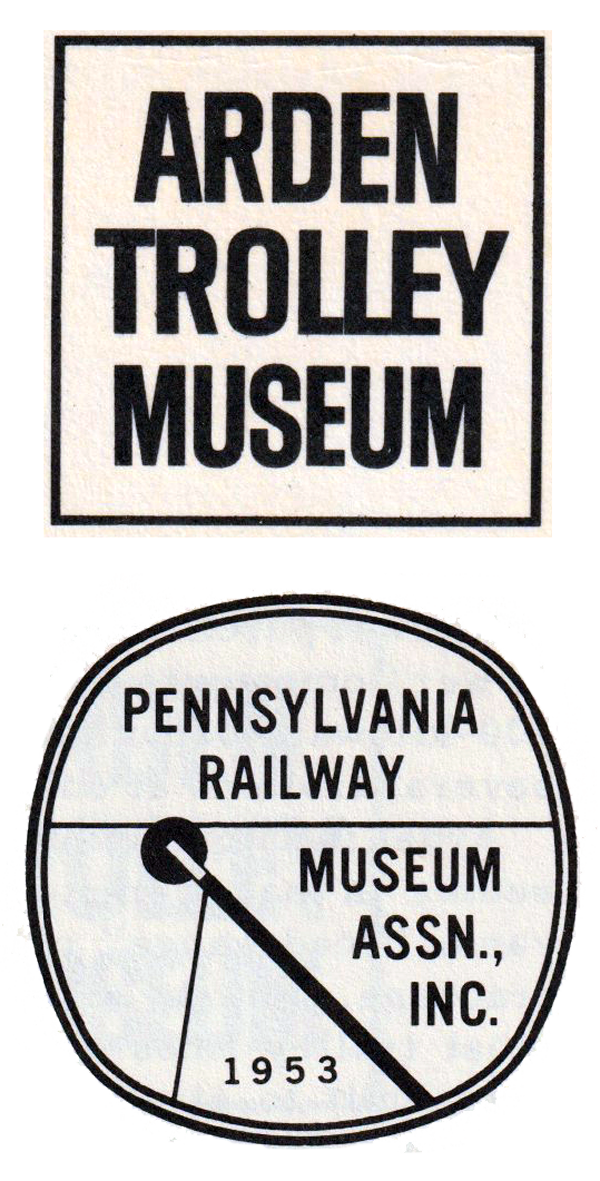

1964 brochure / collection

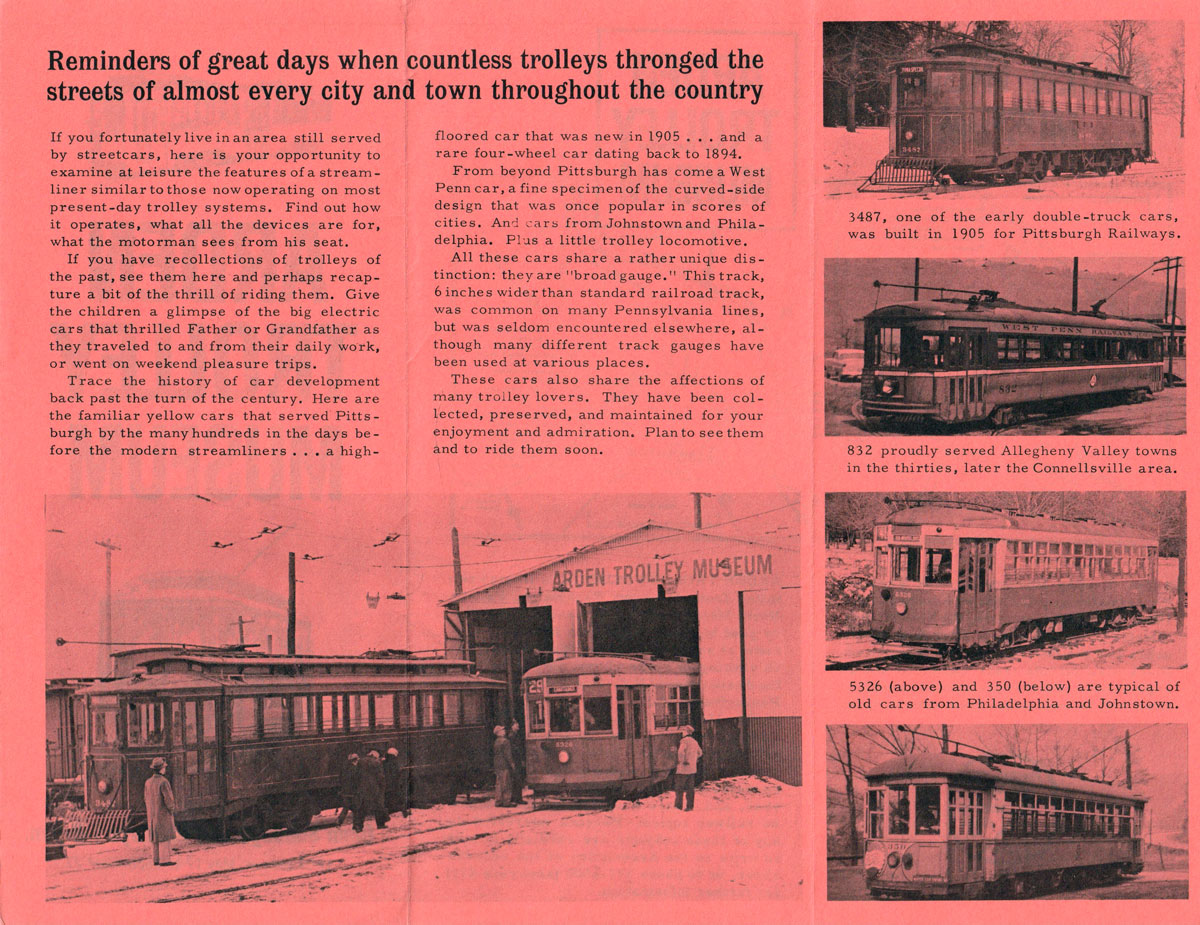

collection
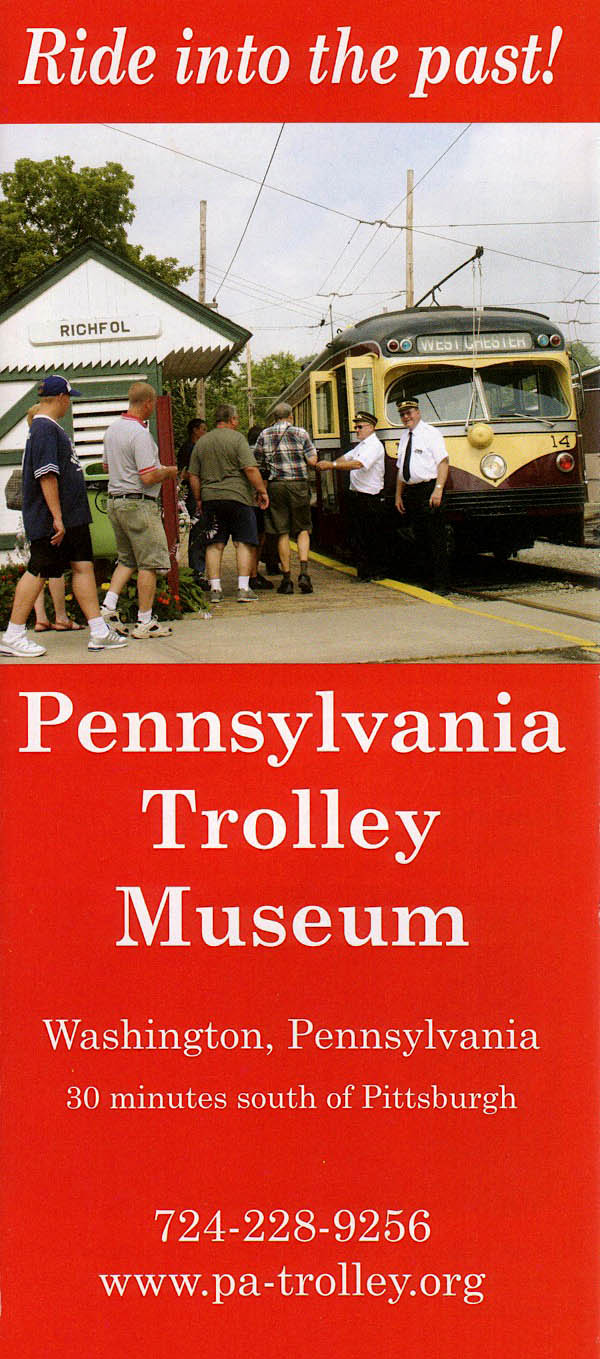
collection

collection
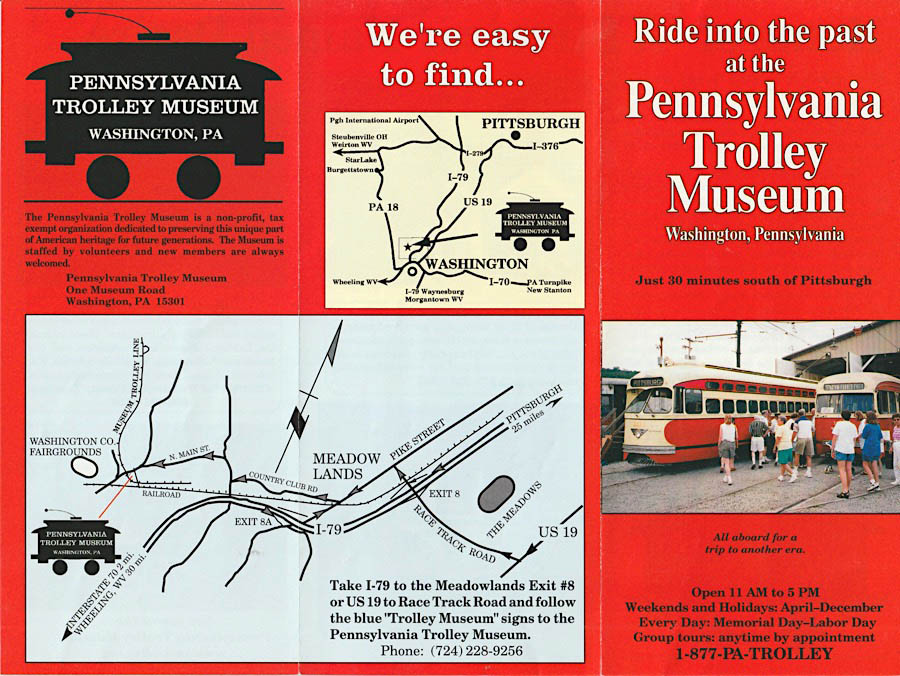
collection
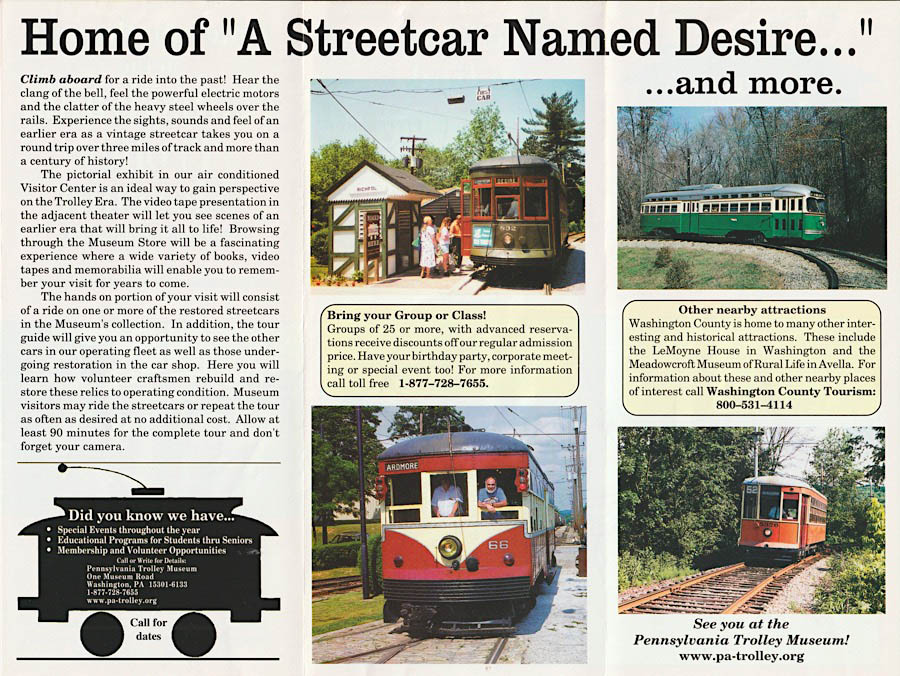
collection
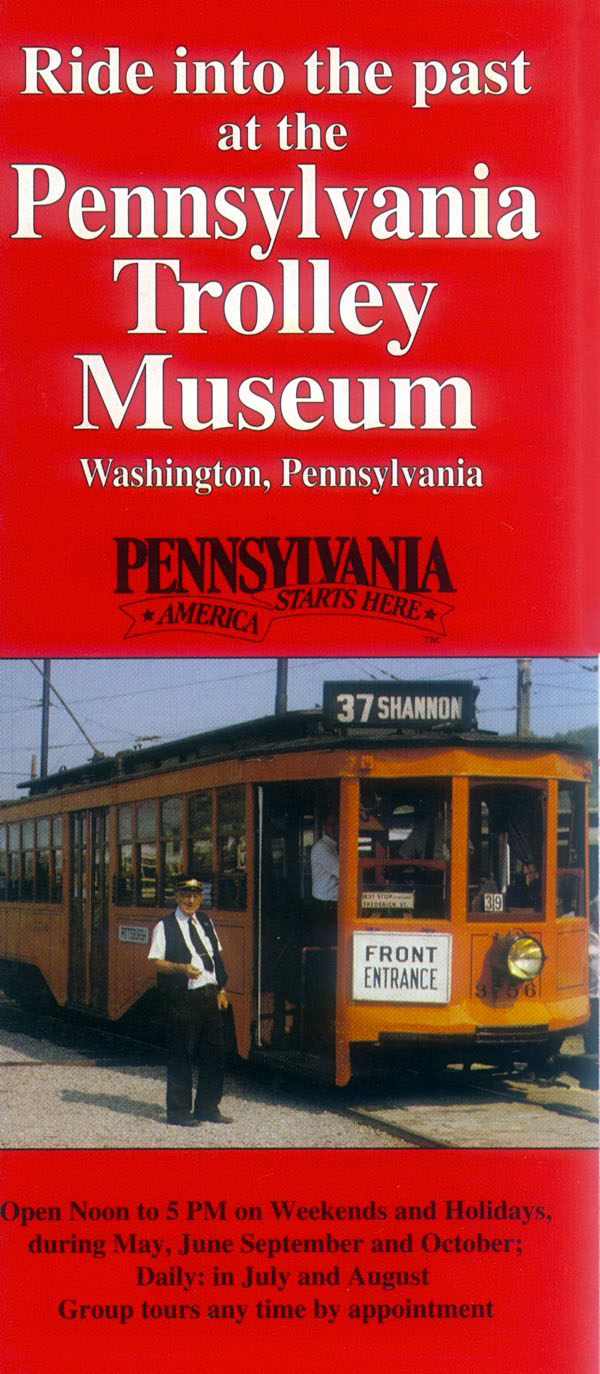
collection
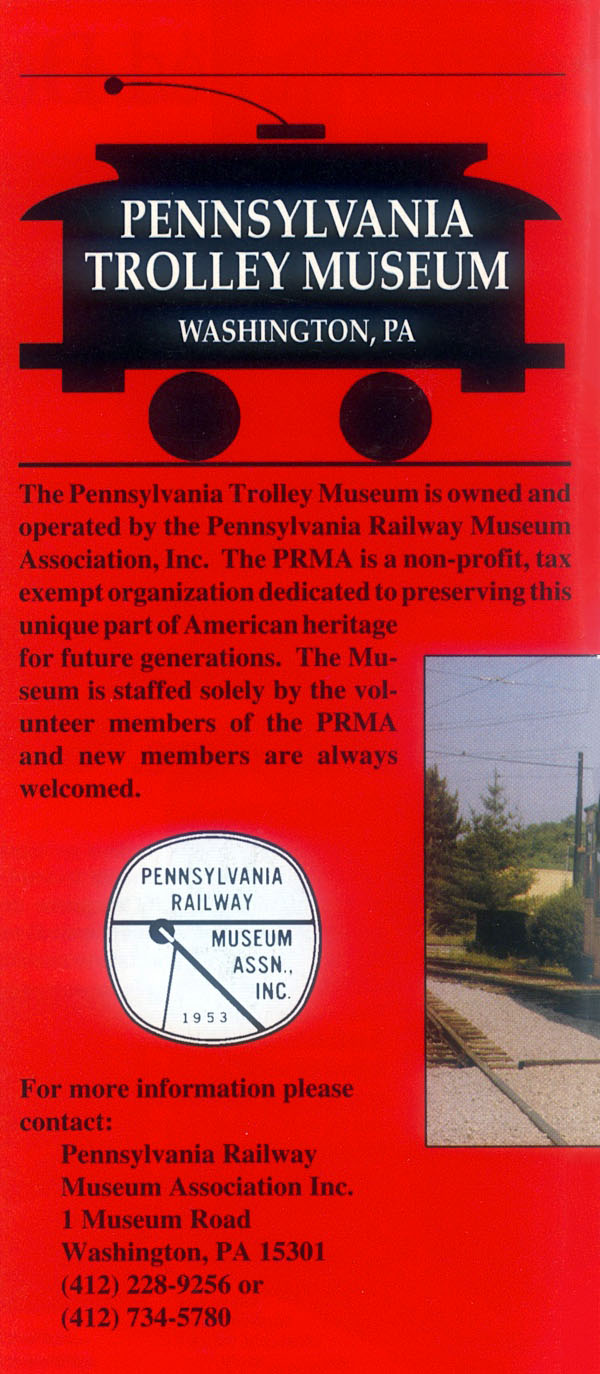
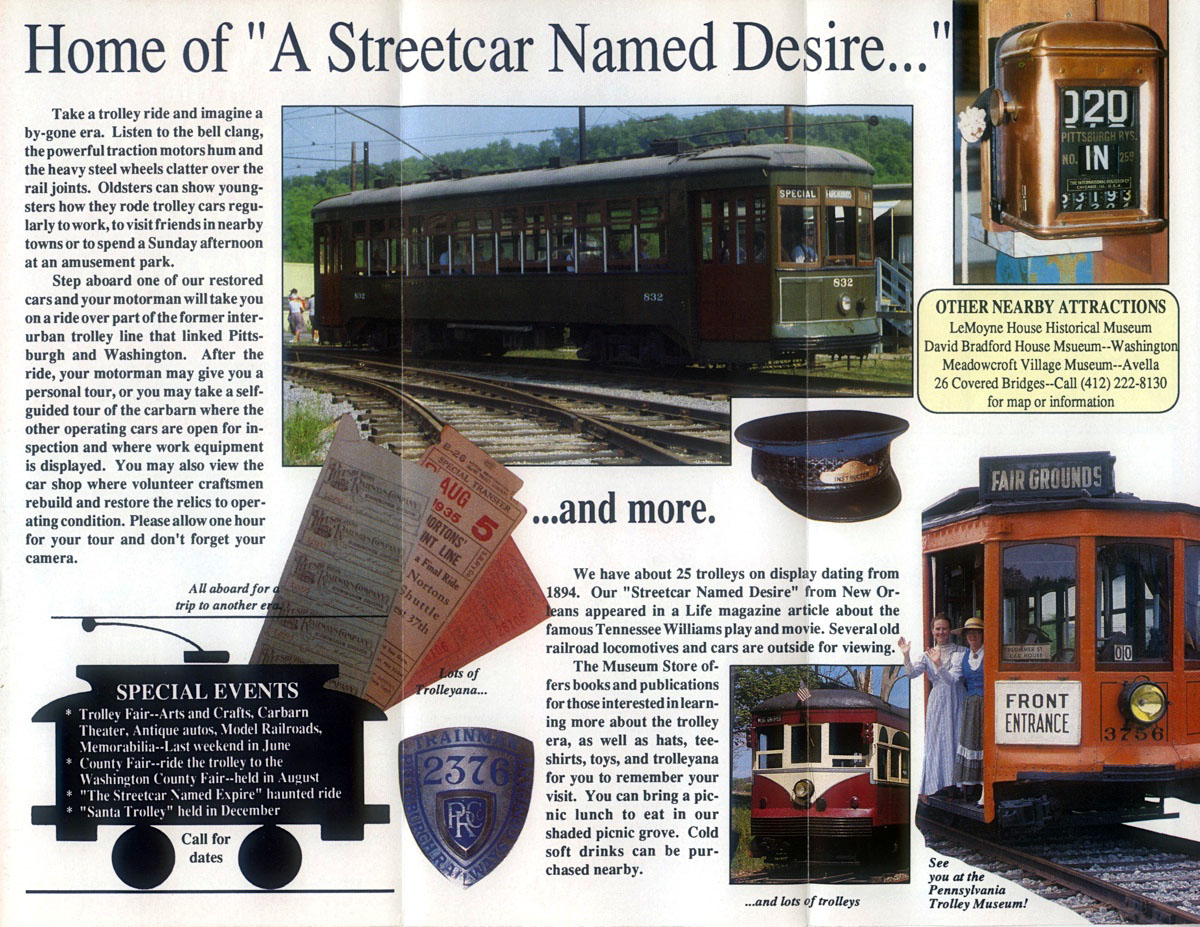
collection
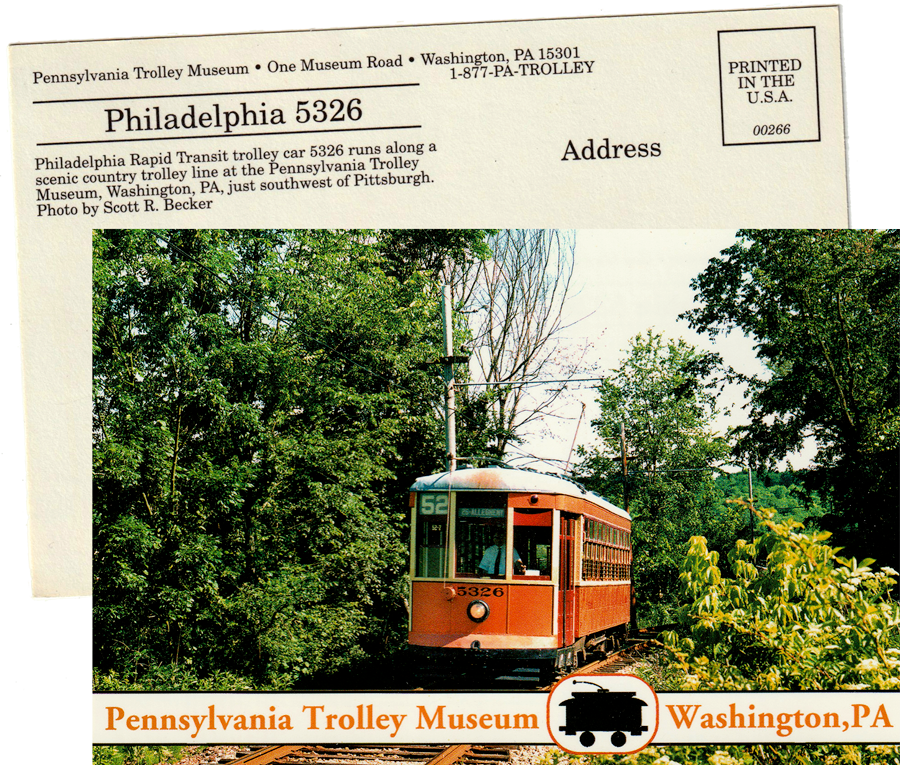
postcard / collection
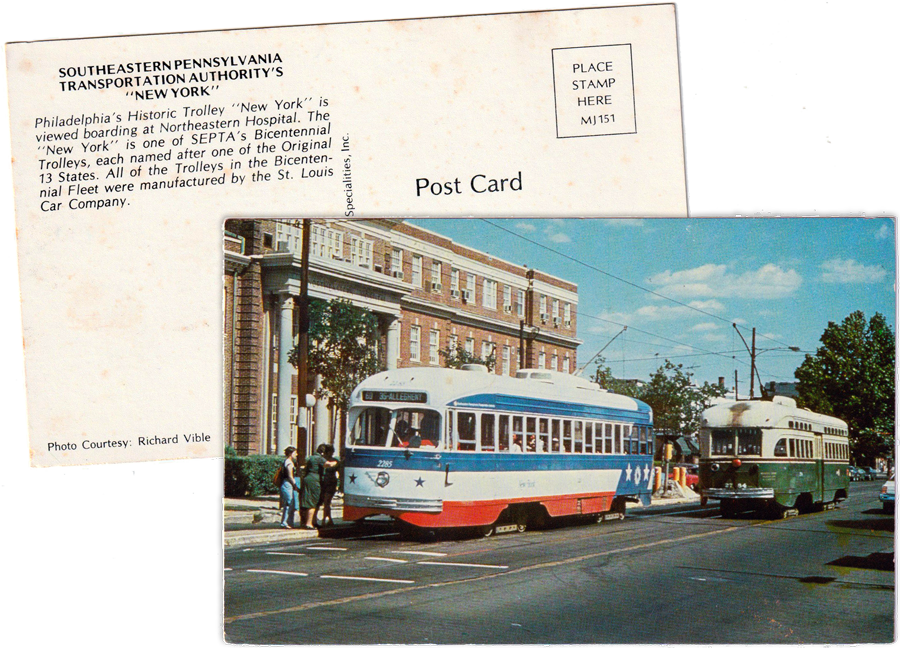
postcard / collection
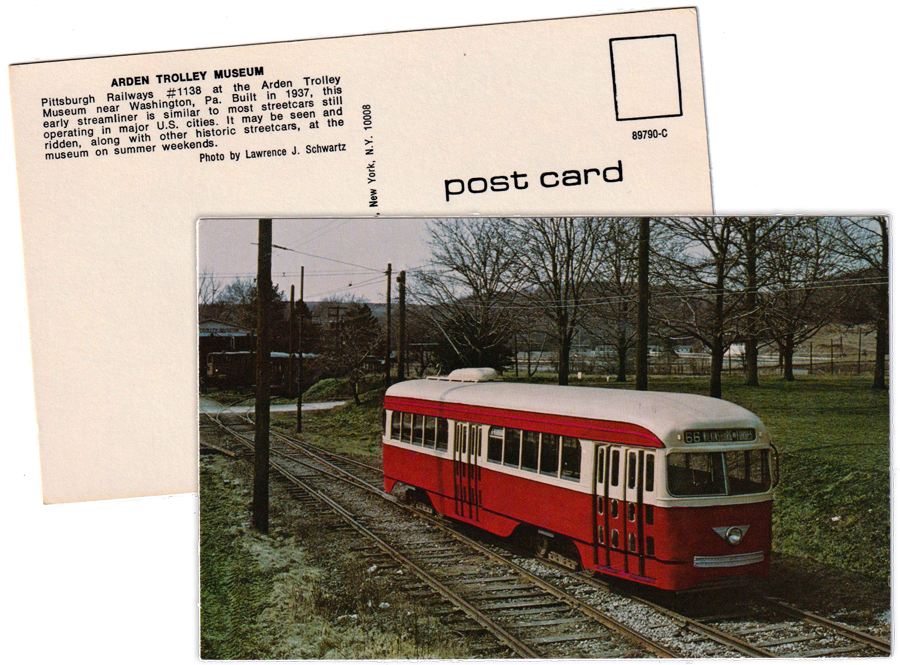
postcard / collection
 Article
Article
Old Trolleys Get New Home
May 15, 2005
After 51 years, The Pennsylvania Trolley Museum in Chartiers finally looks like a museum.
Museum officials and volunteers have opened a $2 million Trolley Display Building that presents 30 trolley cars in two spacious corridors, with display stanchions providing histories of each car.
Before the display building opened May 6, the museum, just off North Main Street in Arden, had a limited number of trolleys on display in a cramped 9,000-square-foot trolley barn. A large number of trolleys had to be placed in storage.
"This is a considerably better viewing experience," museum Executive Director Scott Becker said. "This is three times the size of our original display building.
"Two-thirds of the museum is in this building."
The fee to tour the museum and old trolley barn is $6 for adults, $5 for seniors and $4 for children 3 to 15. An additional fee of $2 for adults and $1 for children now will be charged to tour the new display building.
The tour will take 21/2 hours and include archival displays, a video, a tour of the old barn and a trolley ride before the grand finale, a tour through the new 28,000-square-foot Trolley Display Building.
Besides impressing visitors, it will preserve trolleys.
The building has no windows, so paint jobs are safe. Humidity is controlled to prevent condensation, which causes rusting. The building is equipped with a sprinkler system inside, with hydrants outside the building. It also is insulated.
"The cars will not get any worse than they are now," Becker said. "These cars are being preserved."
But the most immediate advantage is the expansive view of the trolley cars with display stanchions providing entertaining stories of each car and how each made its way to the museum.
Inside the front door, visitors are welcomed by the museum's oldest car, a car drawn by horses and mules that operated into the 20th century. It stands side by side with the newest, a 1988 trolley that was one of the last the Port Authority of Allegheny County built. "It looks like the day it was new," Becker said.
Three trolleys were converted into homes, but not mobile homes. An interurban West Penn trolley car that traveled among Uniontown, Connellsville and Greensburg become a home in Jeanette in 1952, "an early version of a single wide," Becker said, jokingly. "It was a home longer than it was a trolley car."
One retired trolley became the Dew Drop Inn in Ellwood City, which straddles the border of Beaver and Lawrence counties. It still has the bar and a door leading to the men's room.
Trolley conditions range from fully restored to motley. "When we get them, they're not always pretty," Becker said.
There are three snow sweepers, including one from Beaver County. One has had its brush recaned with bamboo. Another is a large freight trolley. A milk trolley holds the record for remaining in service for 81 years, but not all hauling milk. "They got their money out of this one," Becker said.
The heaviest is a 54-ton trolley locomotive. The museum also features an electric car built in 1890 and rebuilt in 1897, making it perhaps the oldest electric car in existence in the United States.
A picnic car from Rio de Janeiro, built in 1911, came to America on a coffee freighter.
Some of the museum's trolley cars have grand tales of survival. A Jersey Shore and Antes Fort car built in 1906 and a sister car were retired in 1925 and transformed into a house, chained side by side to a tree beside a creek.
There they remained until Hurricane Agnes' flood waters swept them two miles downstream in June 1972. One came to rest beside a railroad bridge.
While the property owner was preparing to destroy it, a trolley enthusiast saw it while canoeing and made quick arrangements to salvage it. It arrived at the museum in 1999 with many of its ornate windows intact. "By rights, this has no business existing," Becker said.
The stanchions, he said, turn the museum into the trolley version of the television show, "This Old House."
"Those stanchions are what makes this a museum," Becker said. "There are 30 different stories in this building."
David Templeton — Pittsburgh Post-Gazette
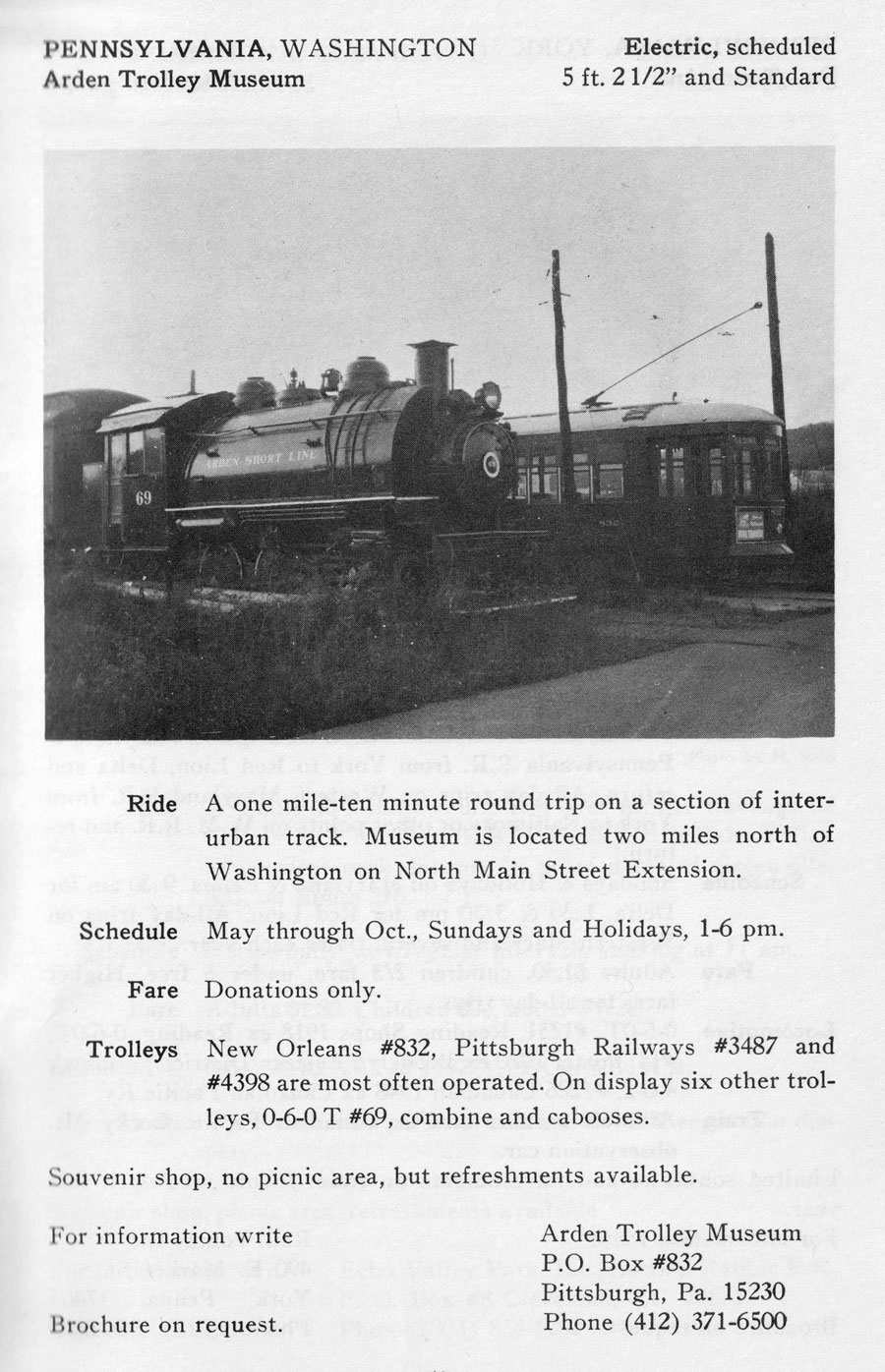
1966 tourist train guide ad / collection

1971 tourist train guide ad / collection
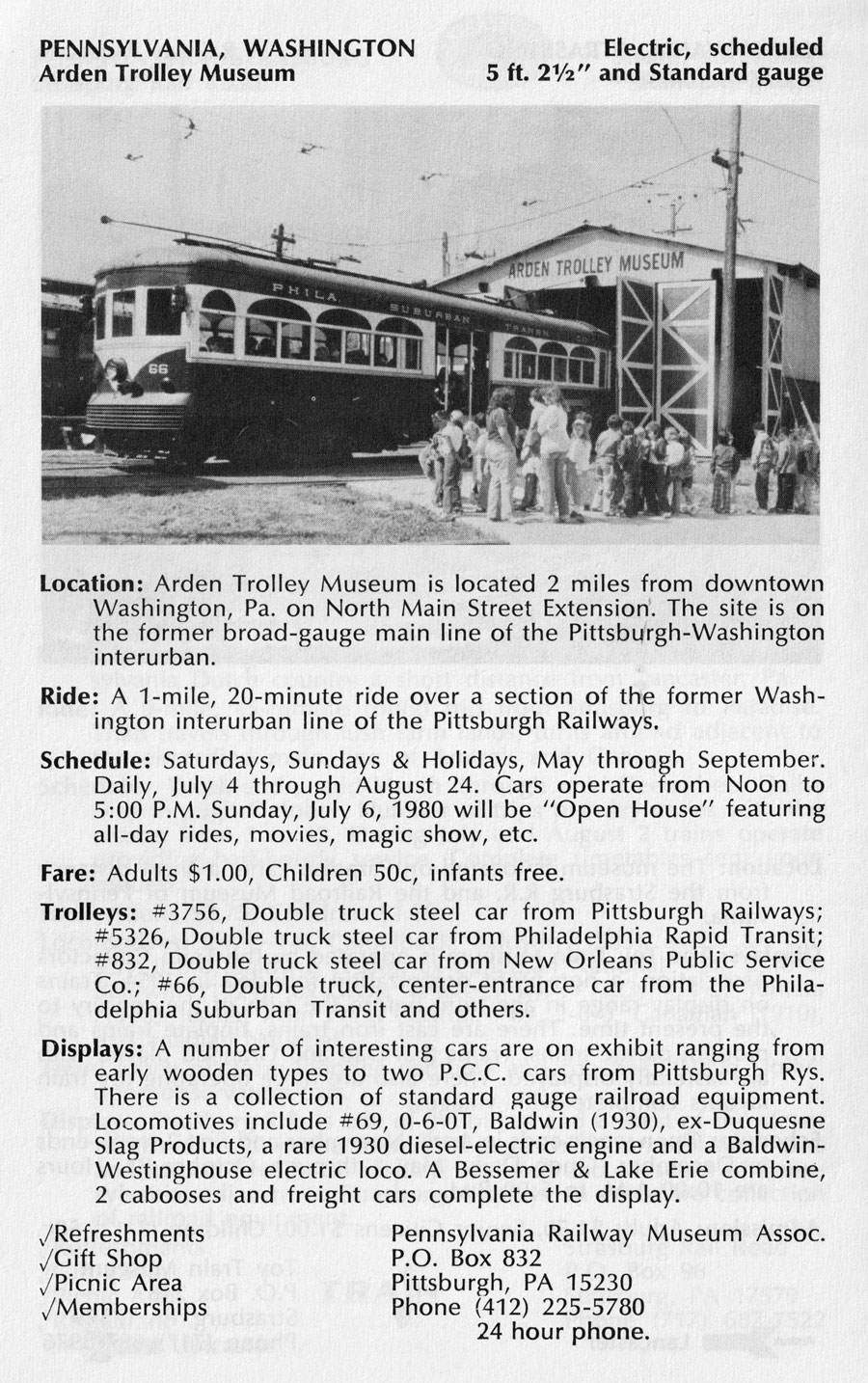
1980 tourist train guide ad / collection
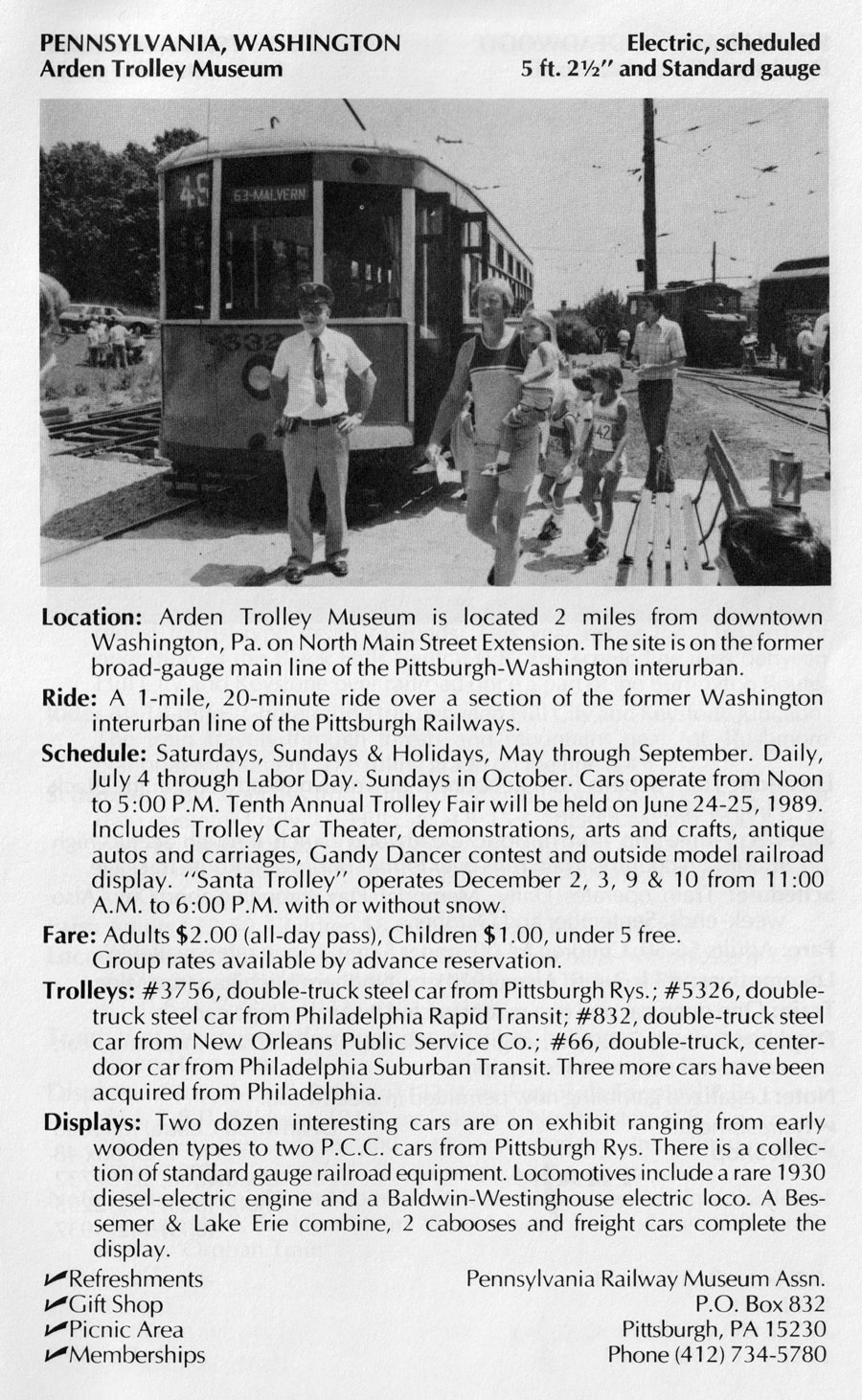
1989 tourist train guide ad / collection

1994 tourist train guide ad / collection

1998 tourist train guide ad / collection
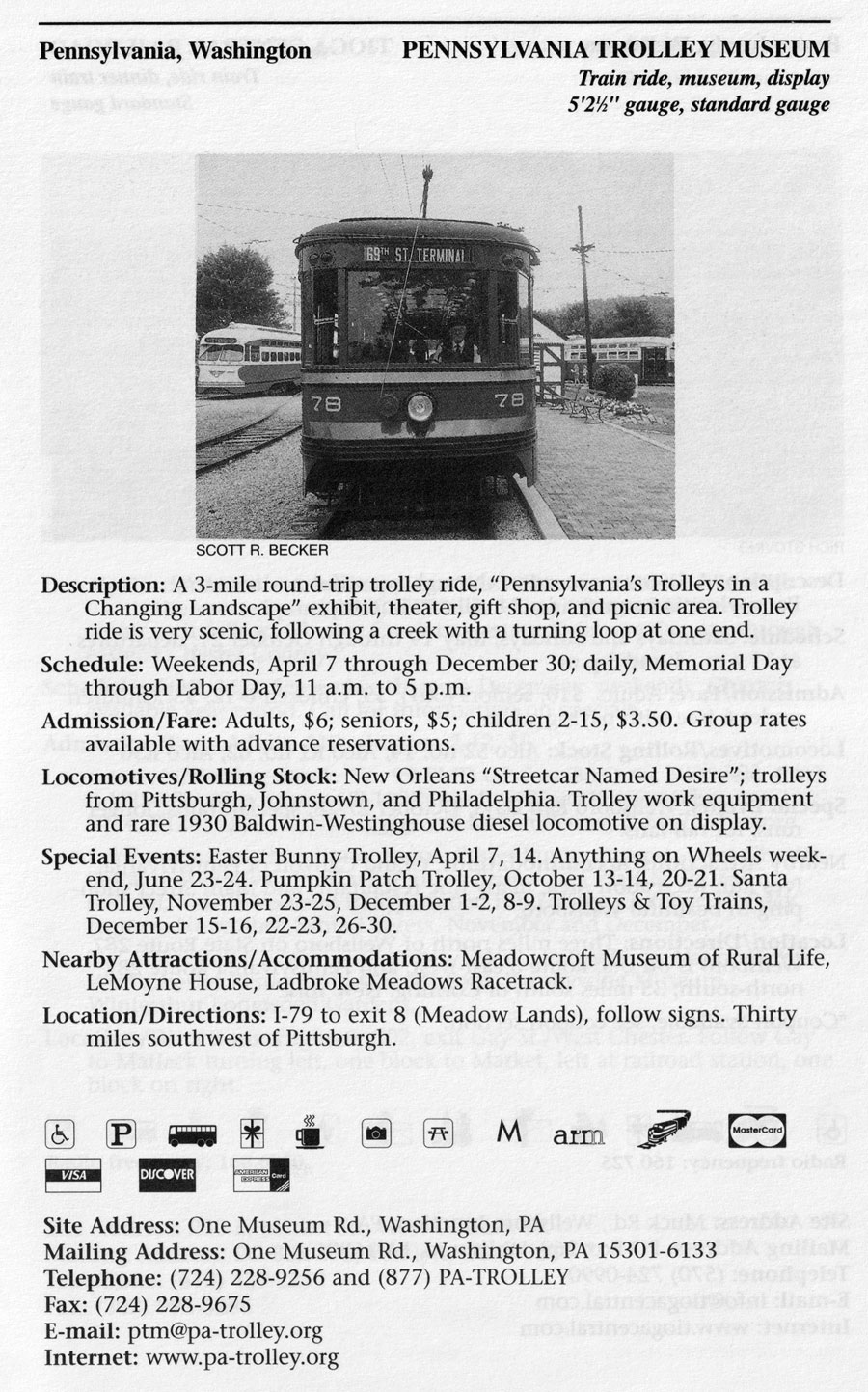
2001 tourist train guide ad / collection
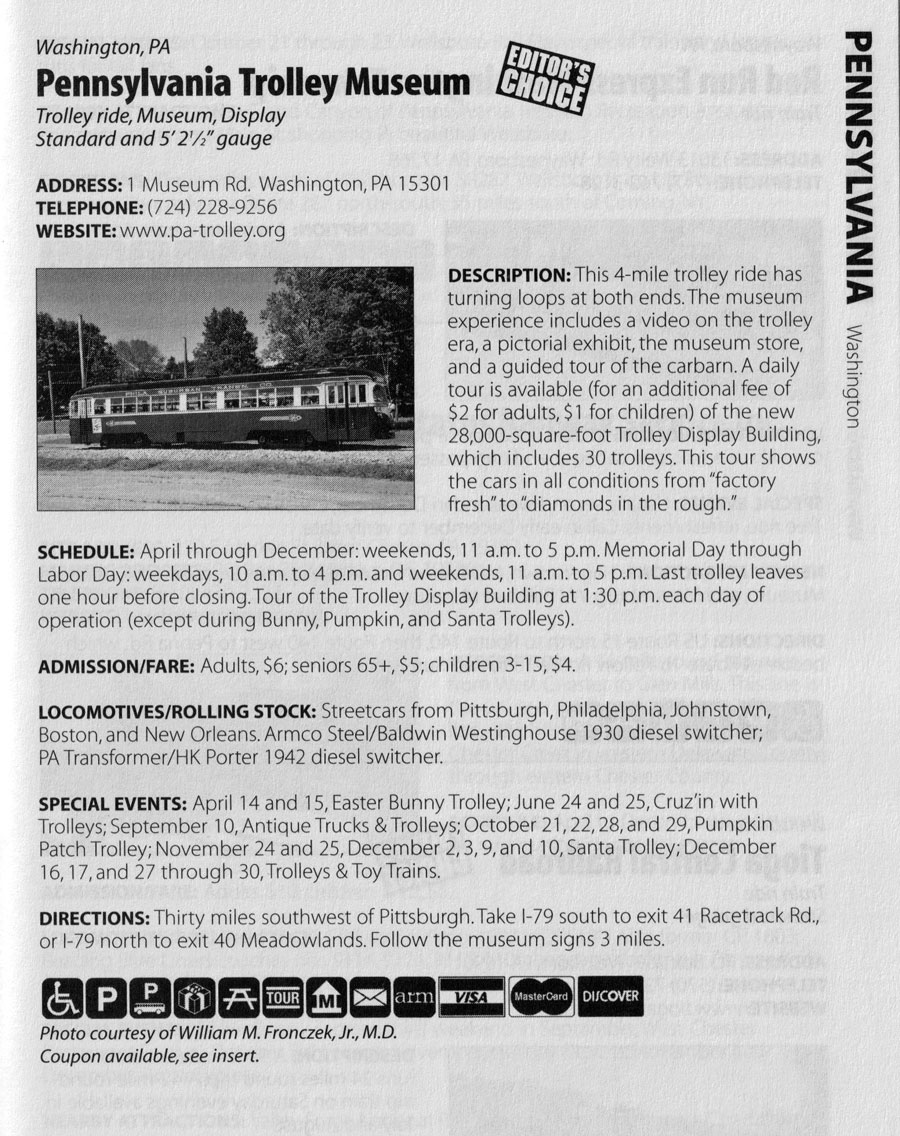
2006 tourist train guide ad / collection

2019 tourist train guide ad / collection
 Trolley People
Trolley People
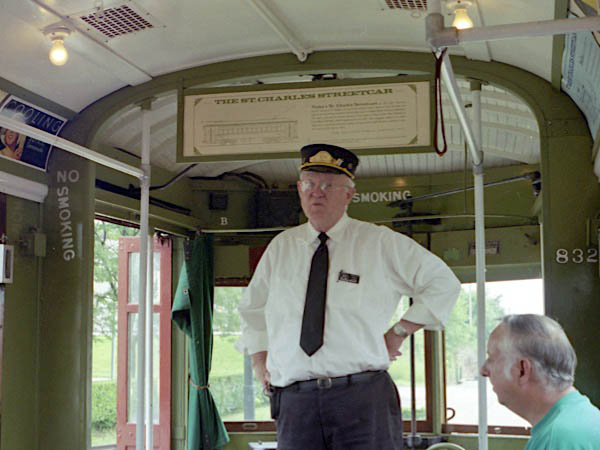
Washington, Pa / Jun 2003 / RWH
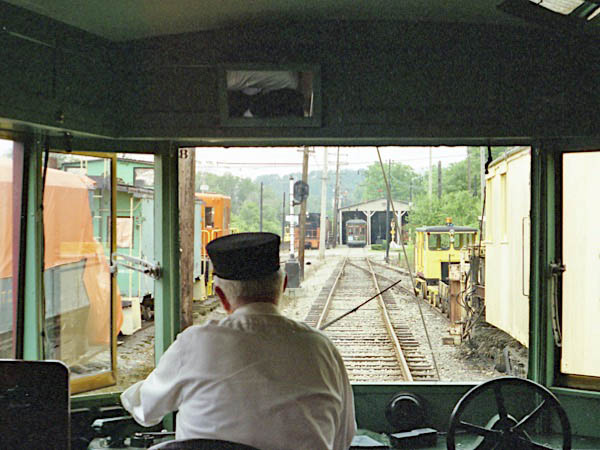
Washington, Pa / Jun 2003 / RWH

Washington, Pa / Jul 2019 / RWH
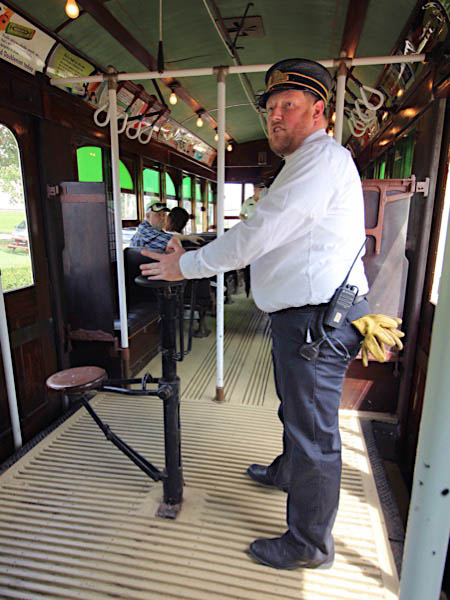
Jul 2019 / RWH
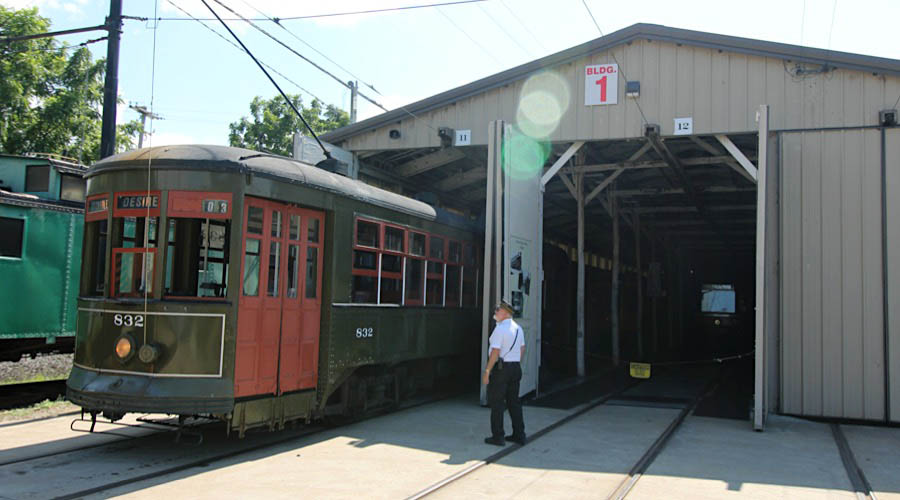
Washington, Pa / Jul 2019 / RWH
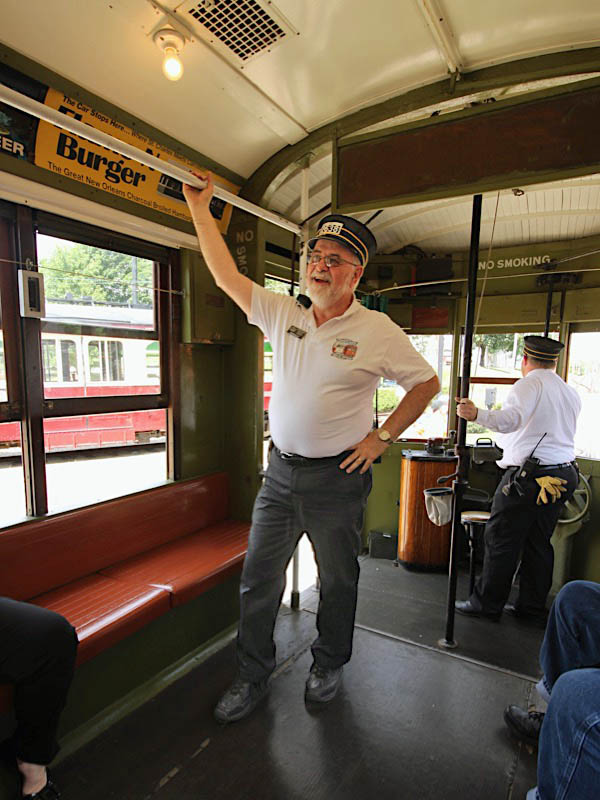
Jul 2019 / RWH
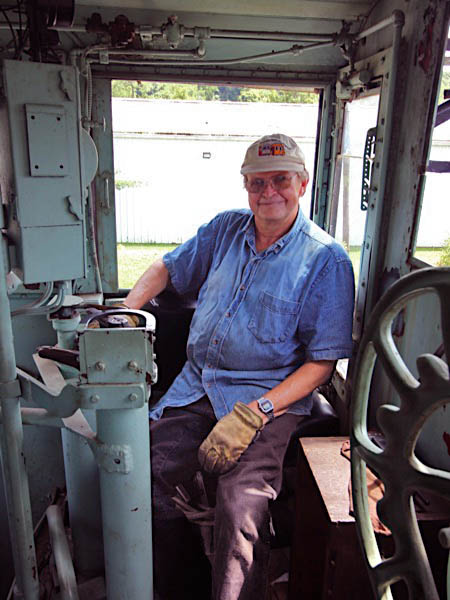
Jul 2019 / RWH
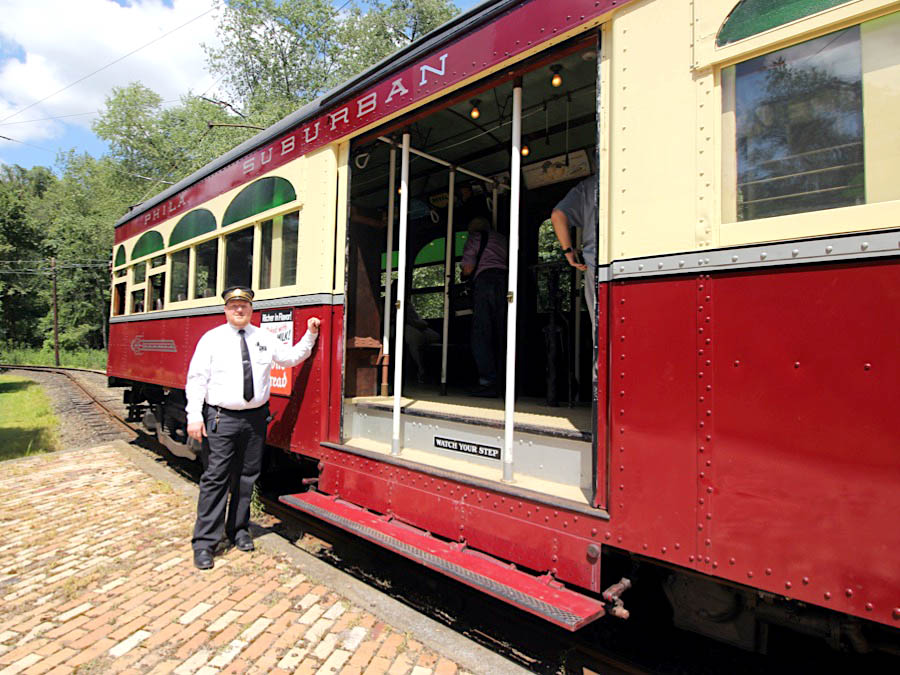
Washington, Pa / Jul 2019 / RWH
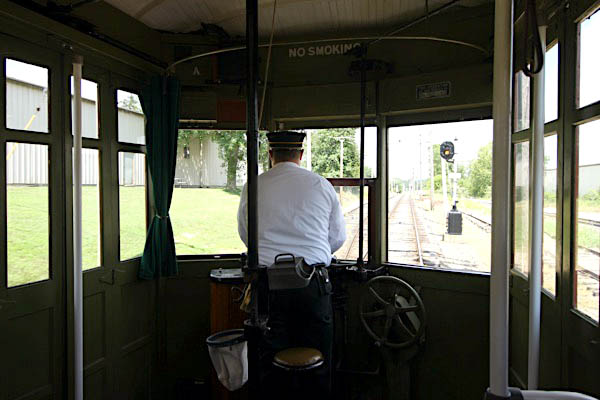
Washington, Pa / Jul 2019 / RWH

Washington, Pa / Jul 2019 / RWH
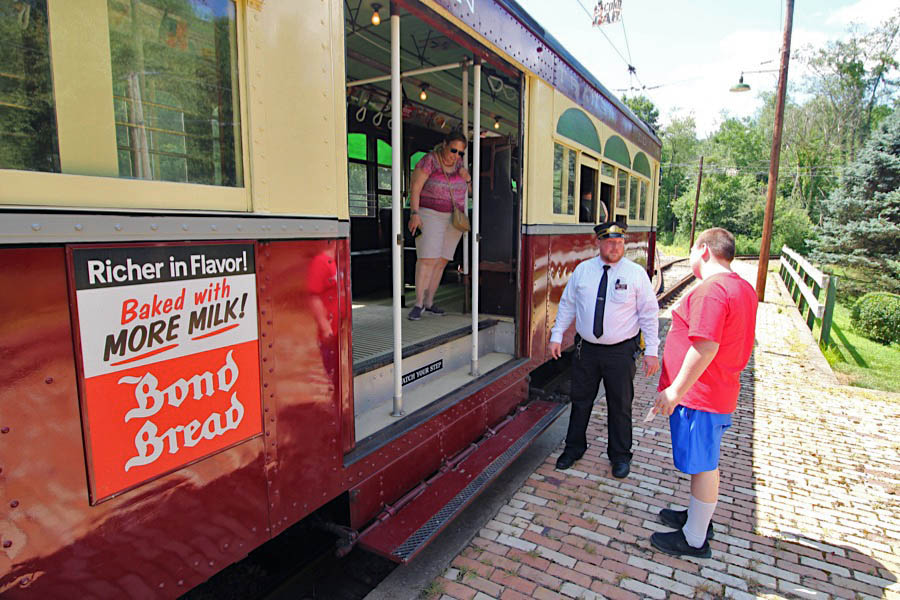
Washington, Pa / Jul 2019 / RWH
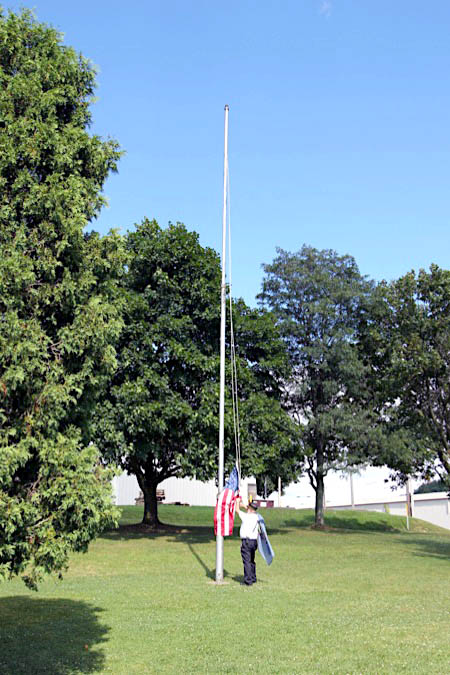
Jul 2019 / RWH
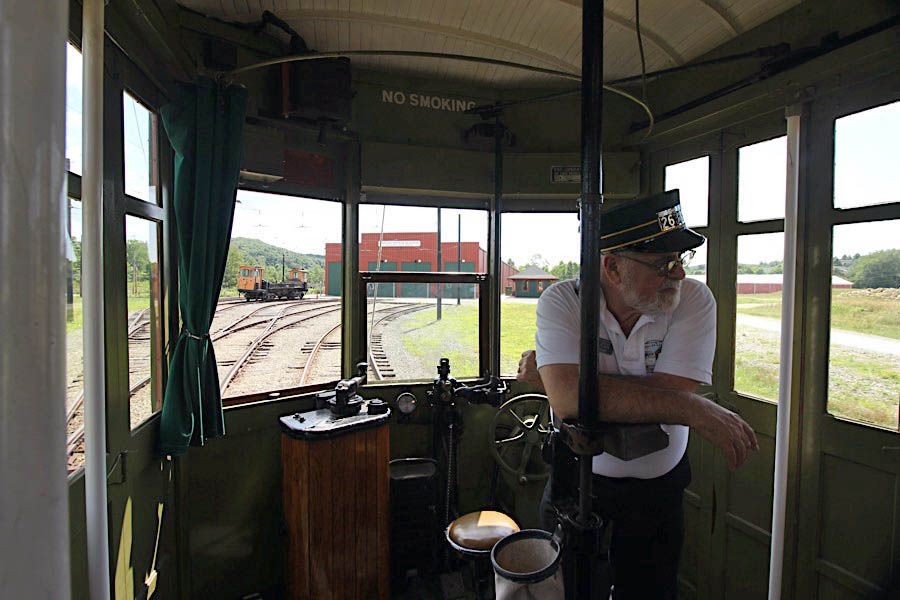
Washington, Pa / Jul 2019 / RWH
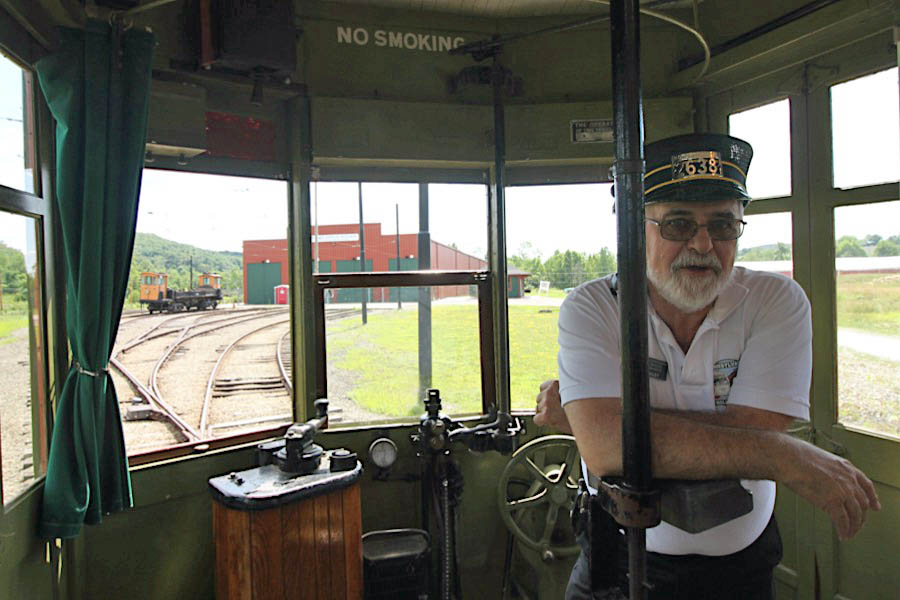
Washington, Pa / Jul 2019 / RWH
 Scrapbook
Scrapbook
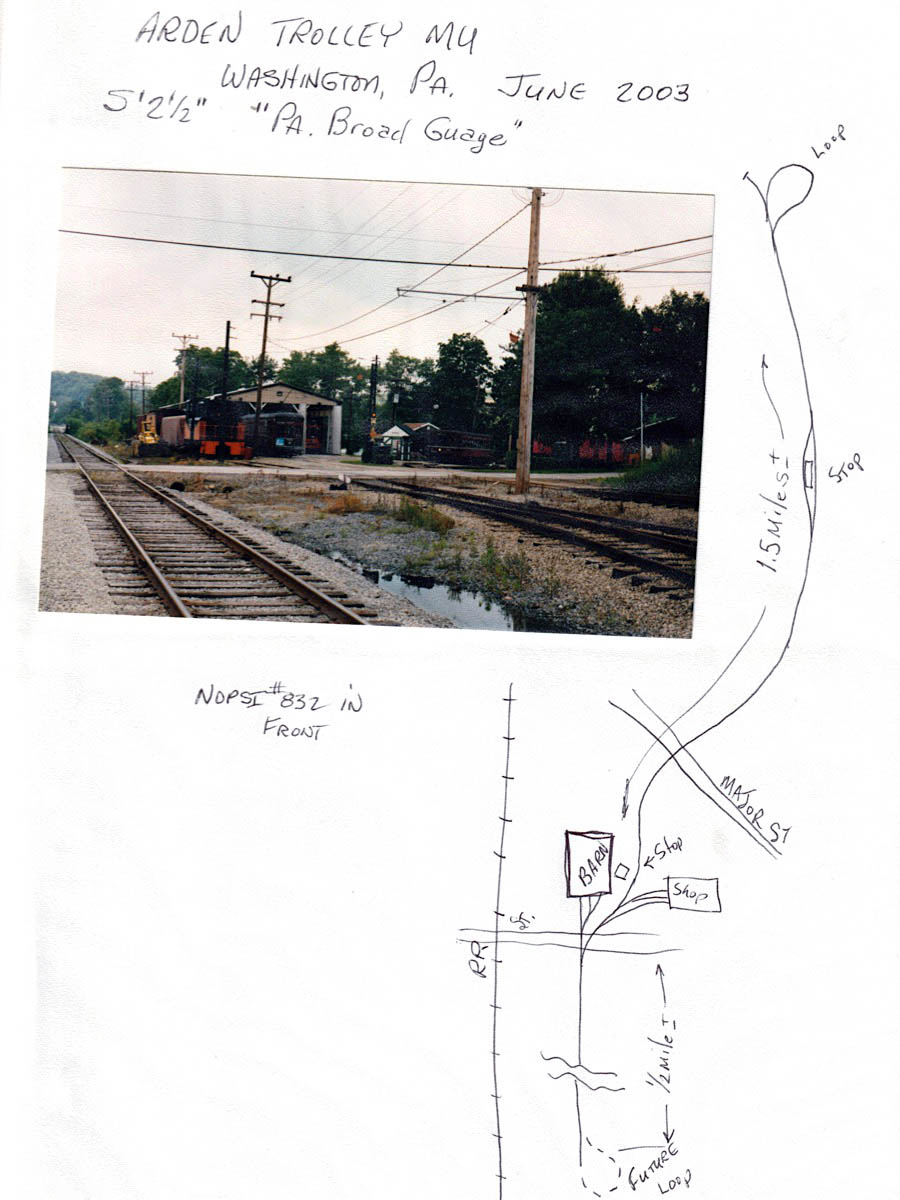
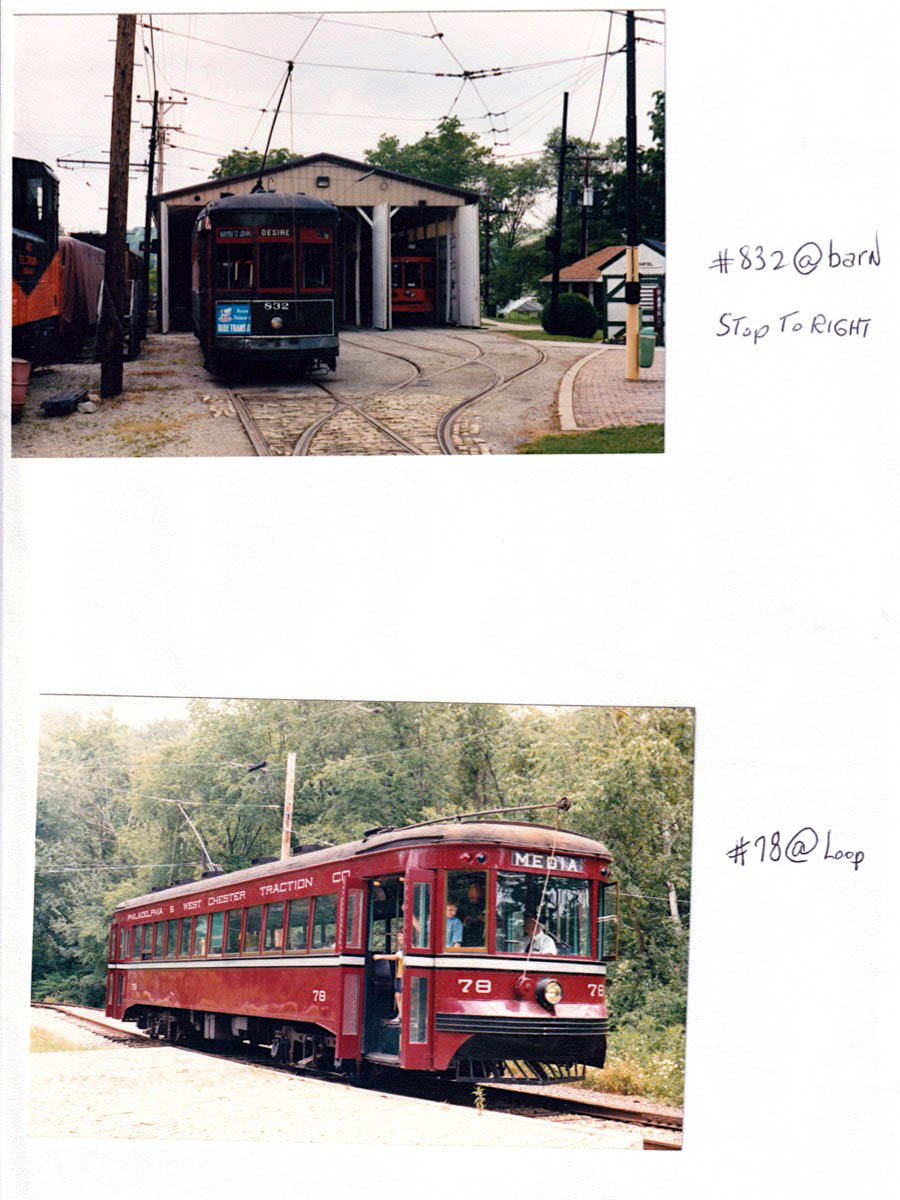

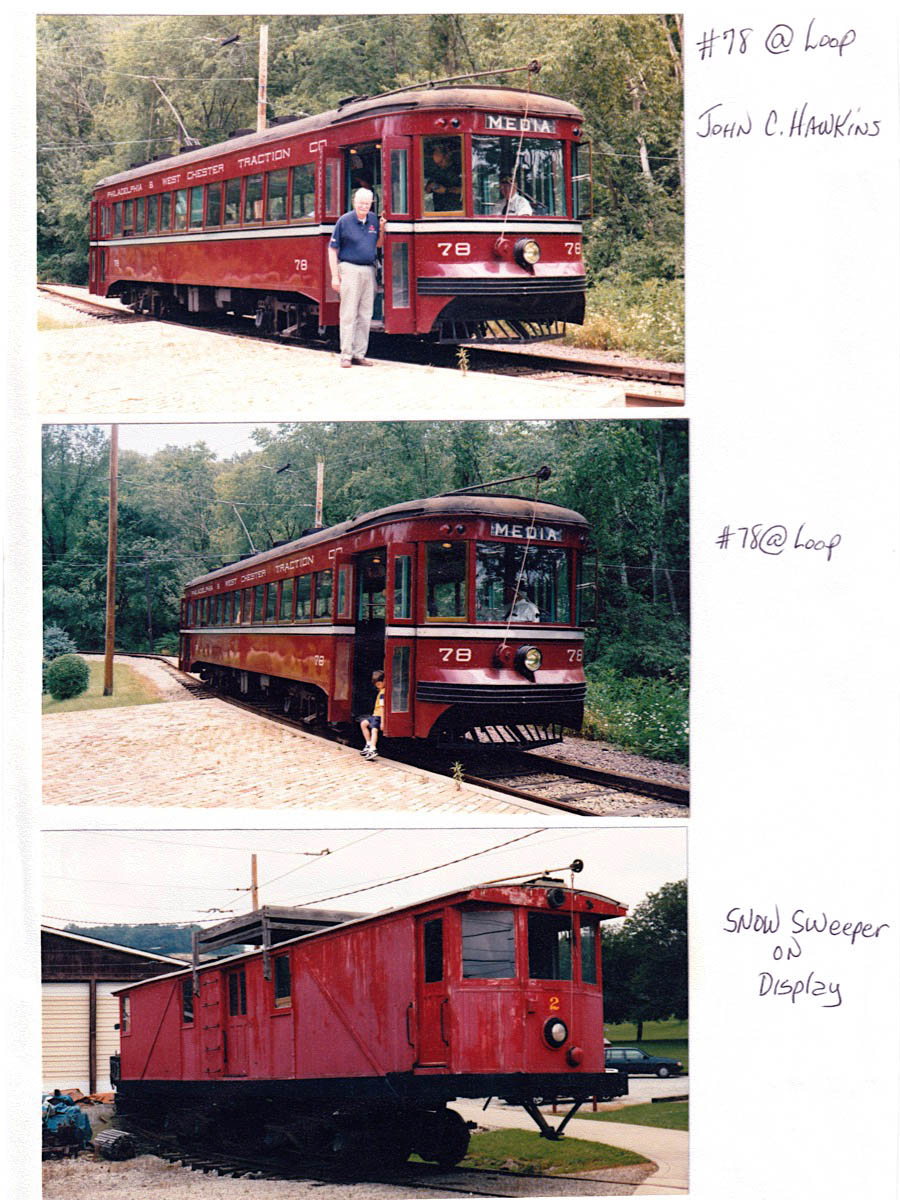
all pages from Pennsylvania Trolley Museum scrapbook / JCH
Lagniappe



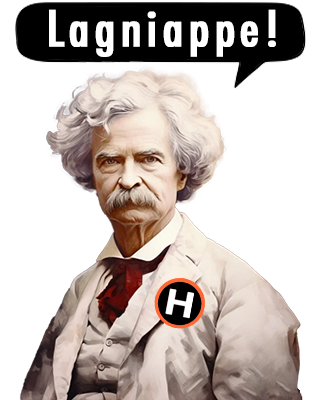
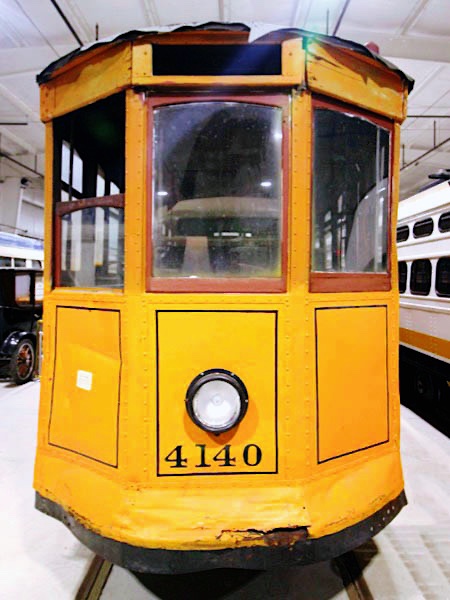
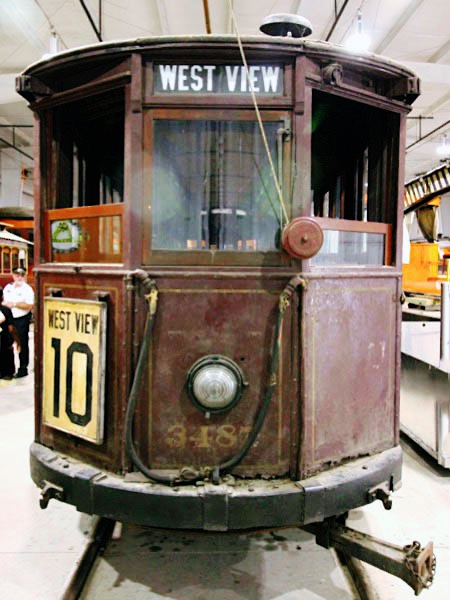
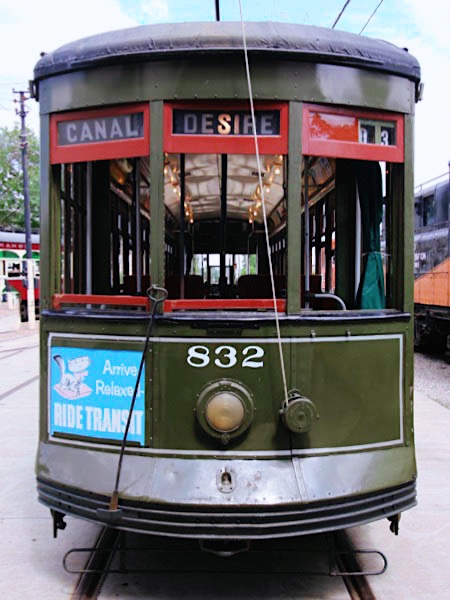
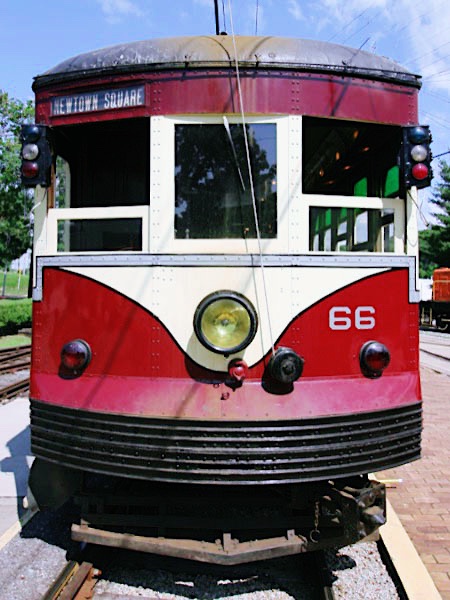
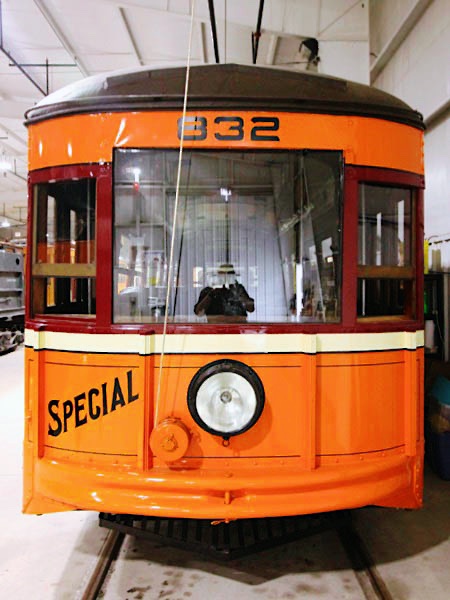
Lovely Lady Lineup
Jul 2019 / RWH
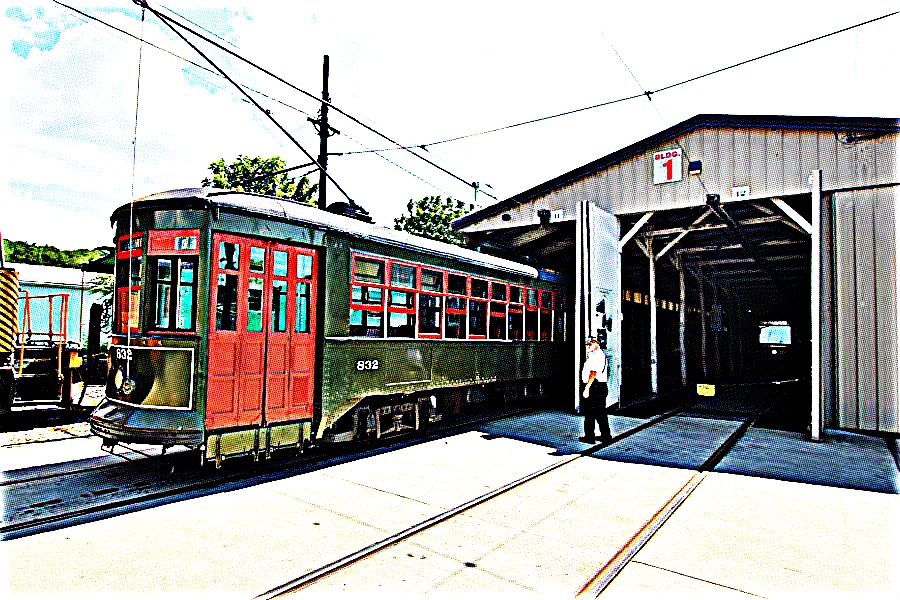
Public Service Survivor
Washington, Pa / Jul 2019 / RWH
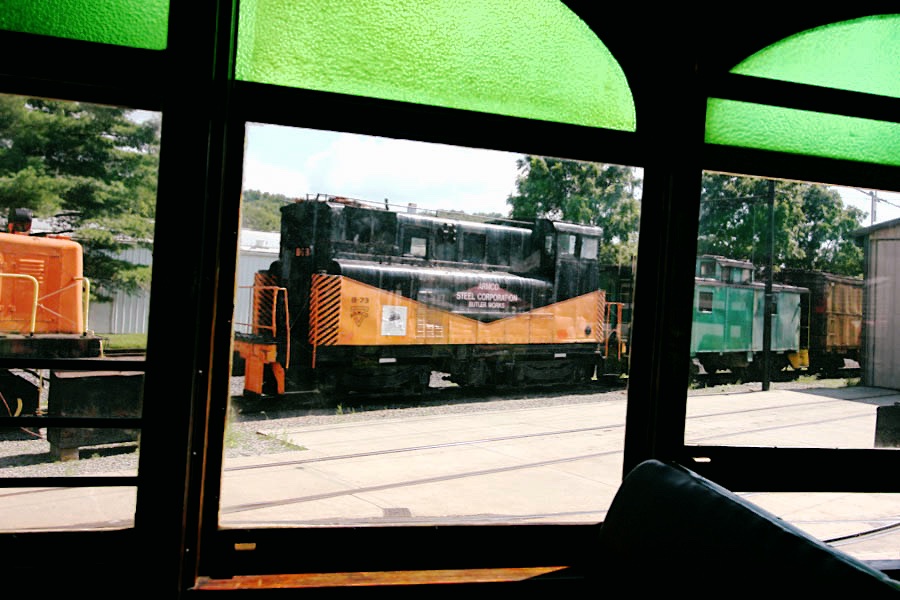
The Sturdy Stepsister
Washington, Pa / Jul 2019 / RWH
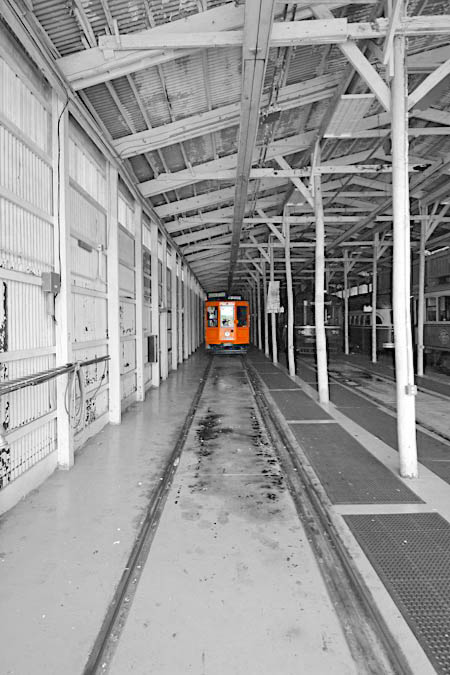
Tunnel Vision
Jul 2019 / RWH
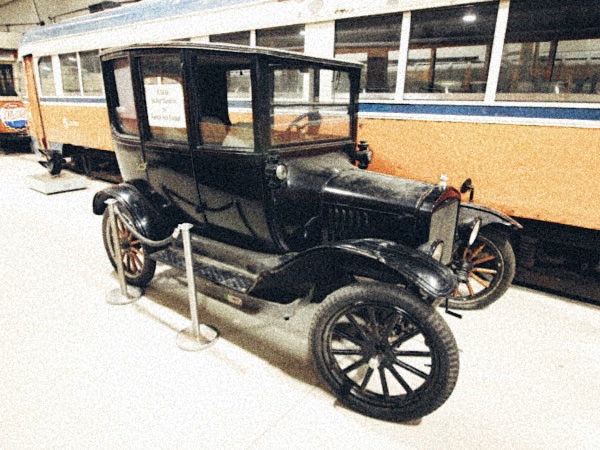
Trolley Competition
Jul 2019 / RWH
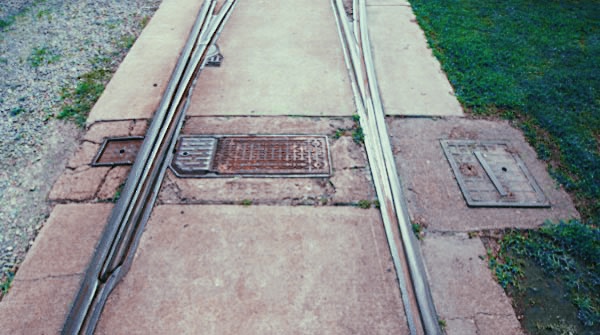
Course Correction
Jul 2019 / RWH
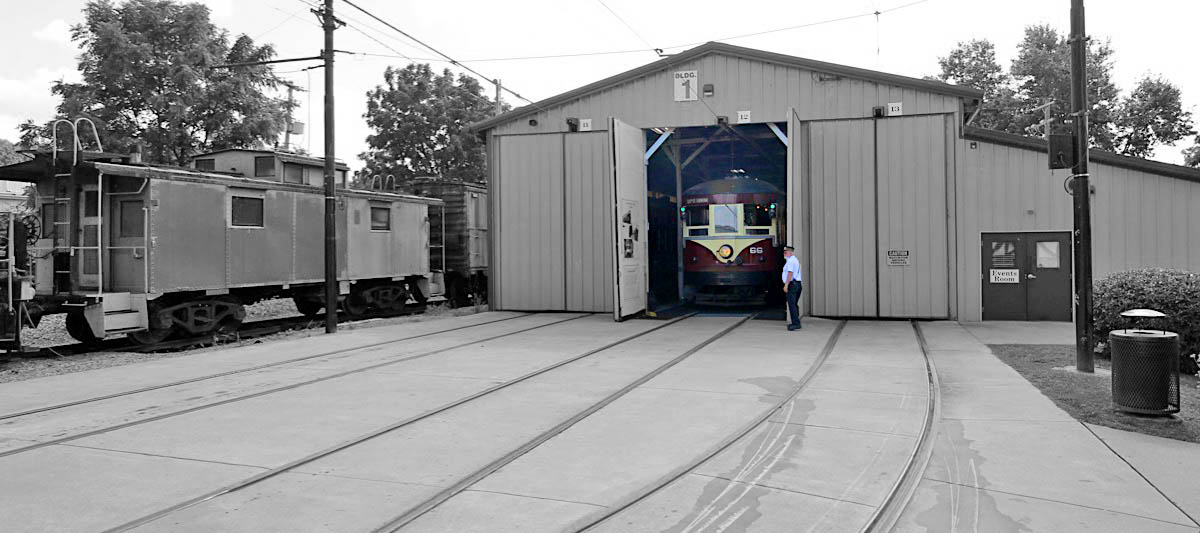
Changing of the Guard
Washington, Pa / Jul 2019 / RWH
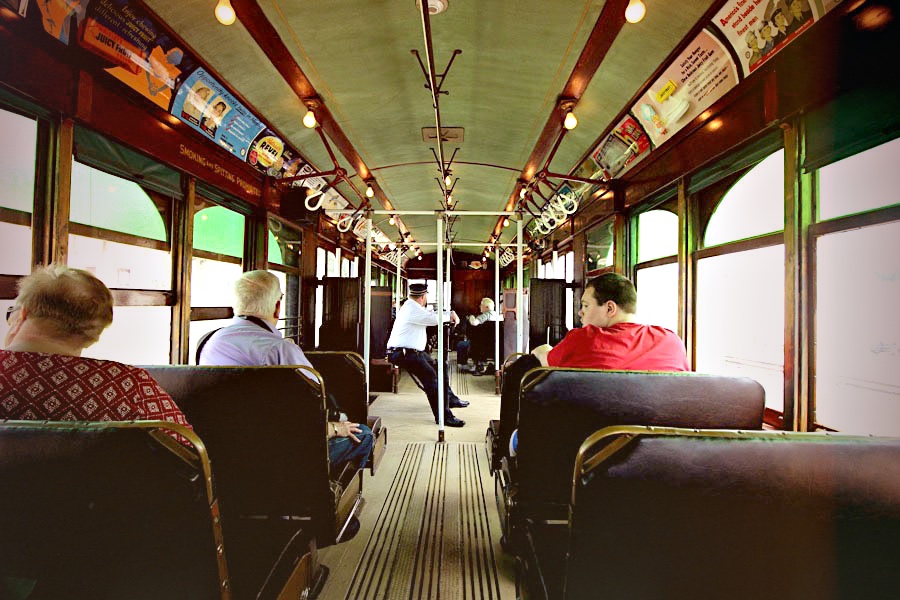
A First Class Affair
Jul 2019 / RWH
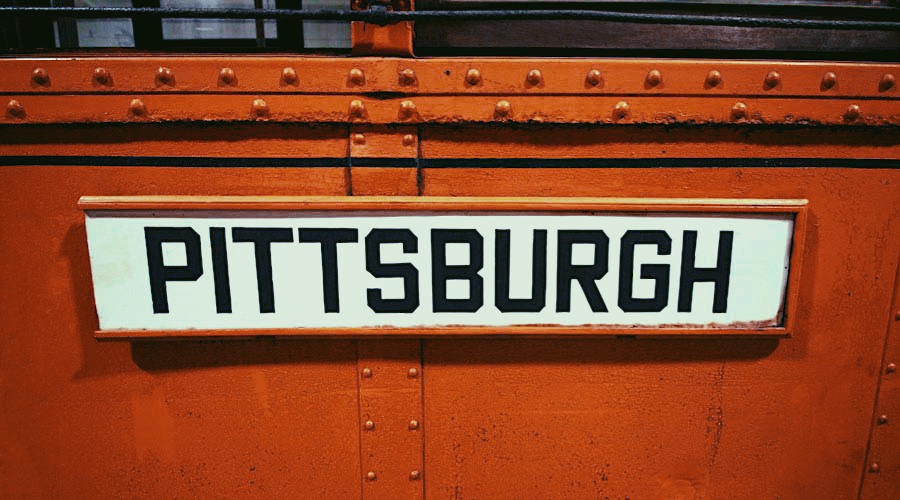
Steel City Signage
Jul 2019 / RWH

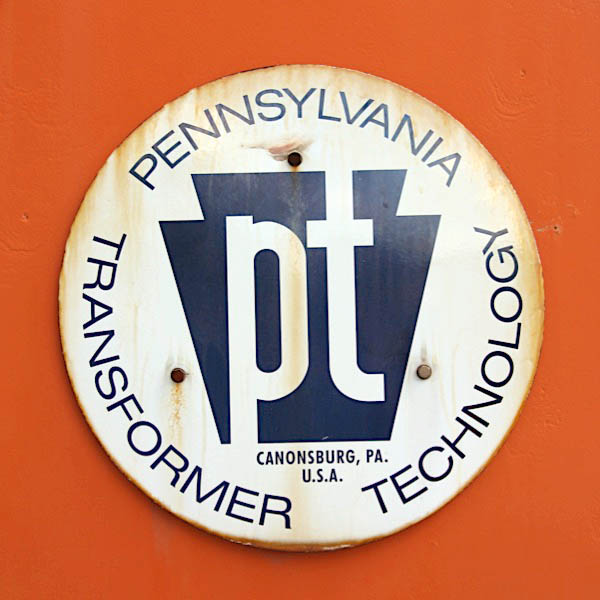

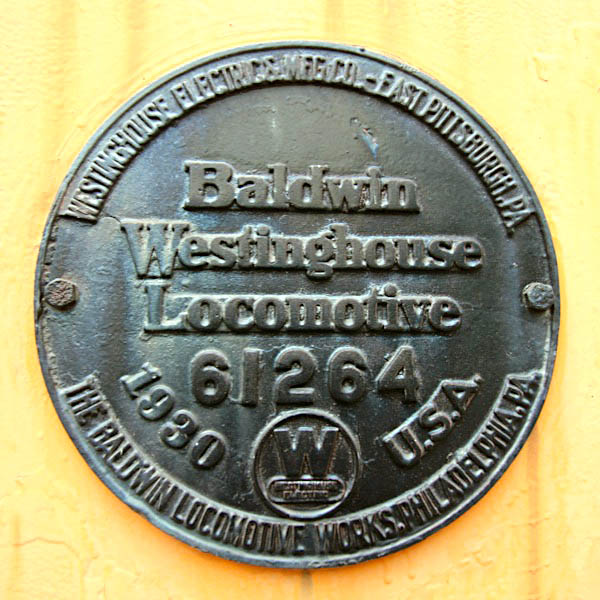



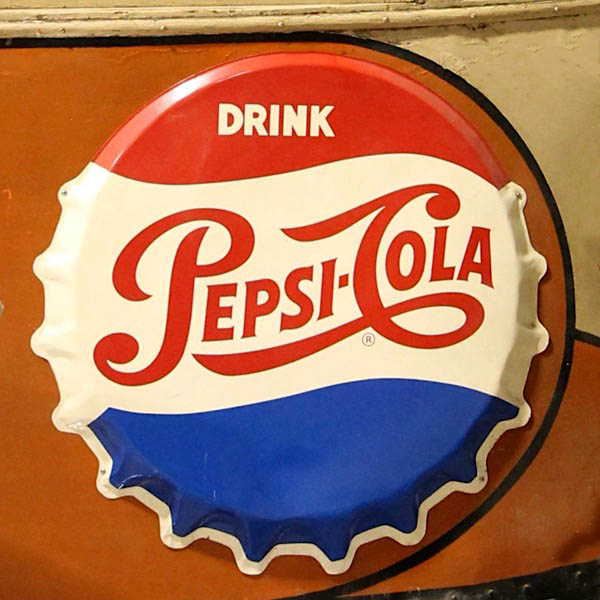

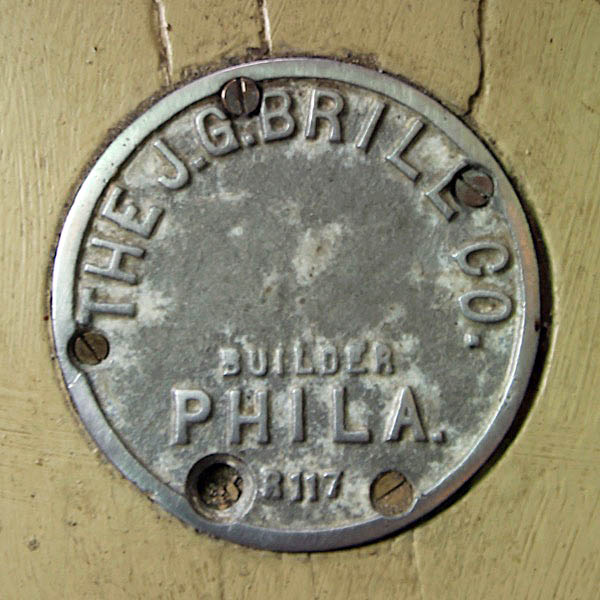
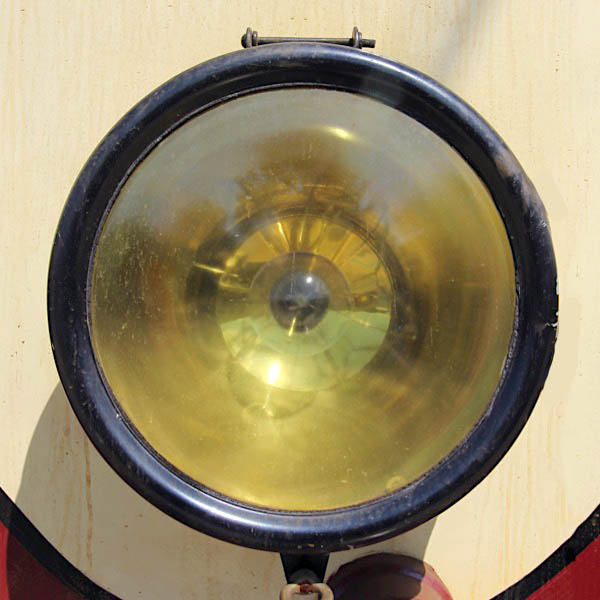
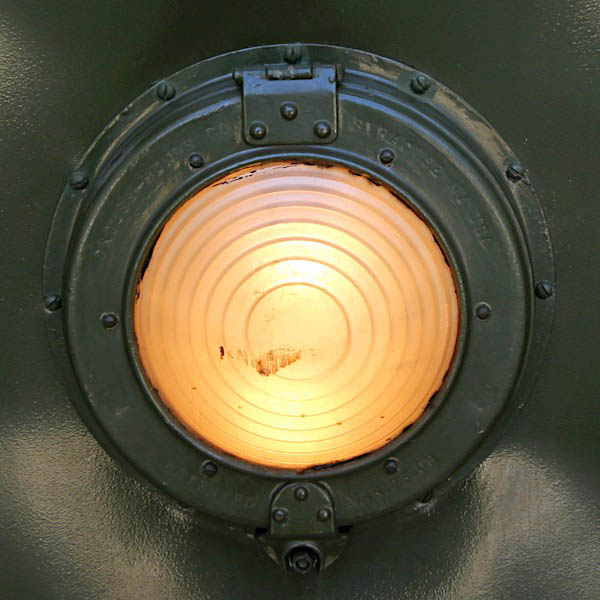
Study in Streetcar Circles
Jul 2019 / RWH
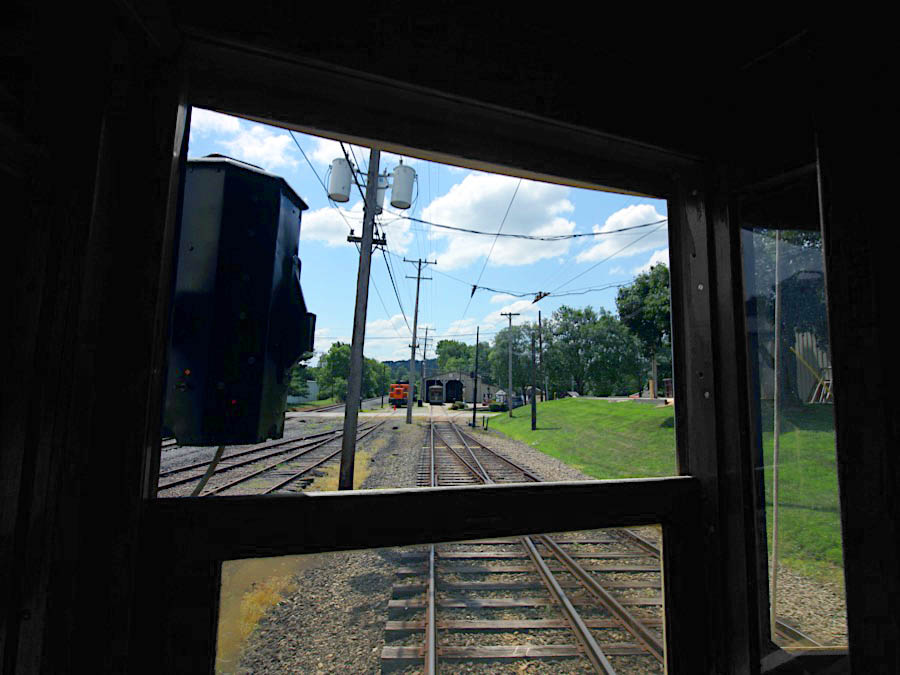
Homeward Bound
Washington, Pa / Jul 2019 / RWH
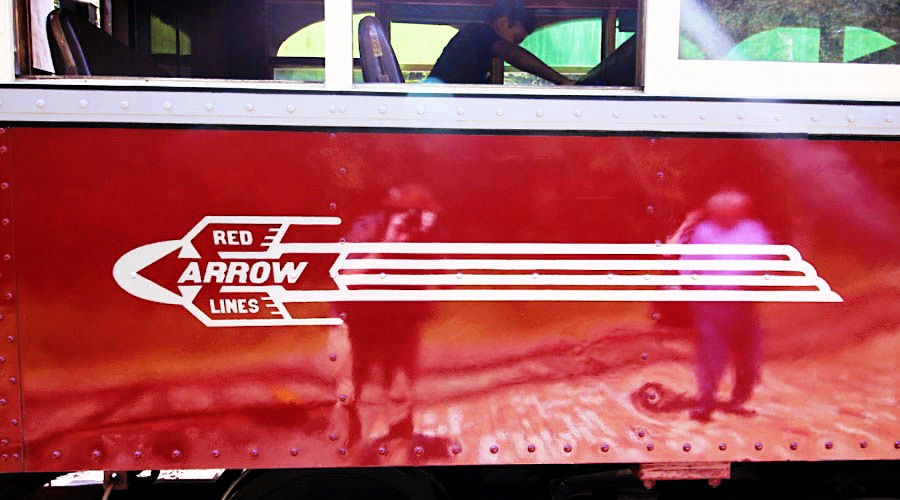
Lipstick Lovers
Jul 2019 / RWH
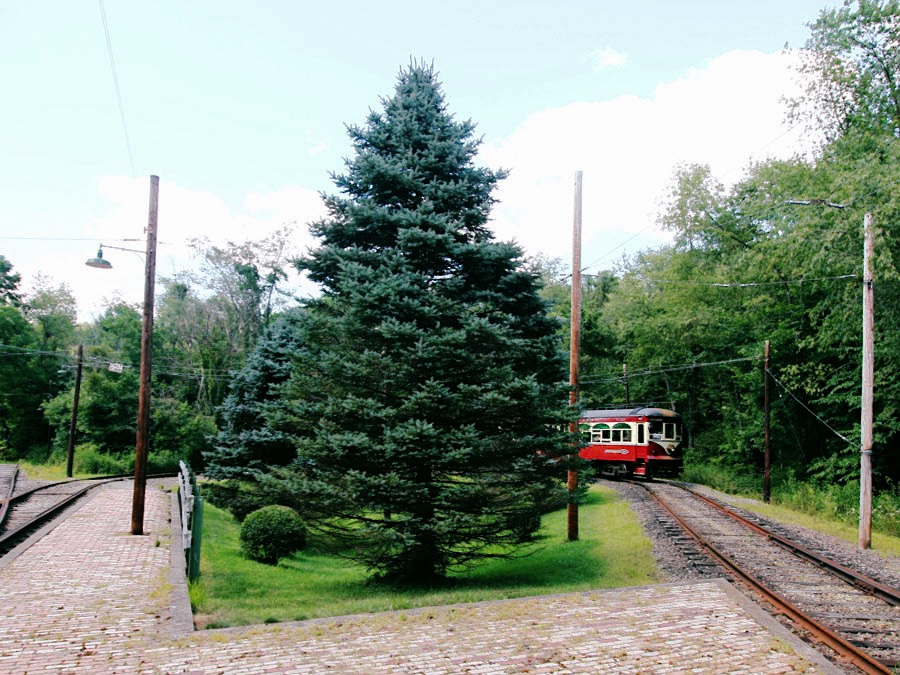
"Come Out, Come Out, Wherever You Are"
Washington, Pa / Jul 2019 / RWH
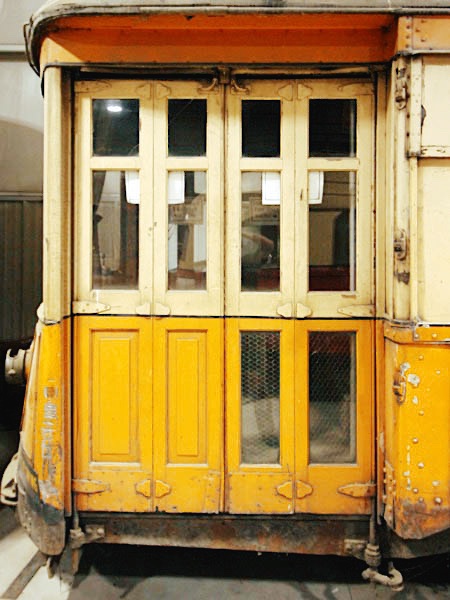
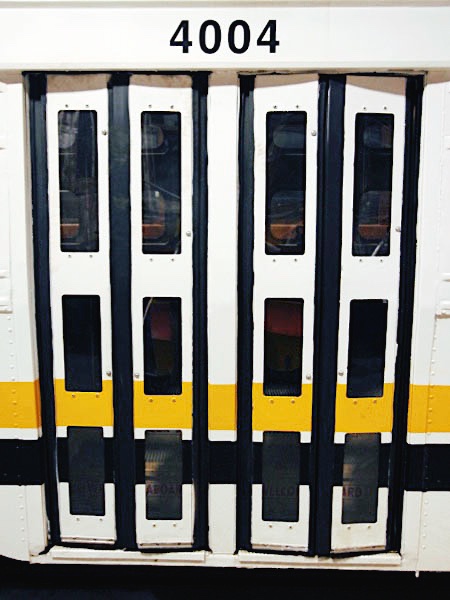
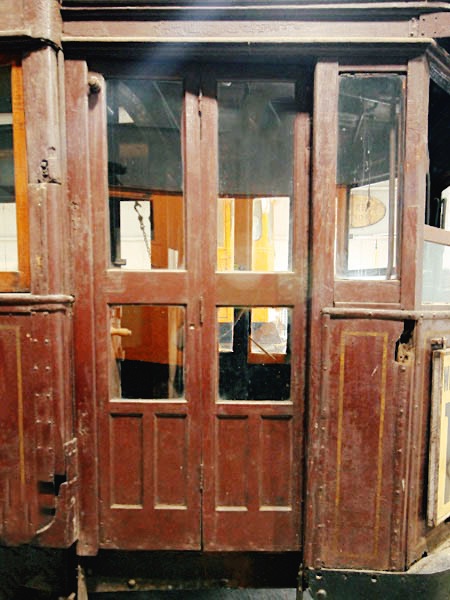
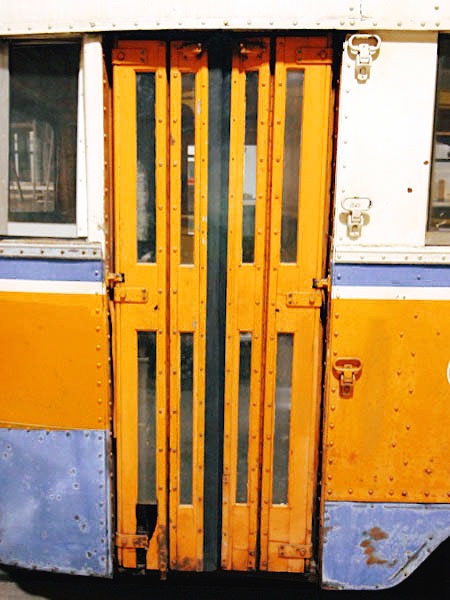
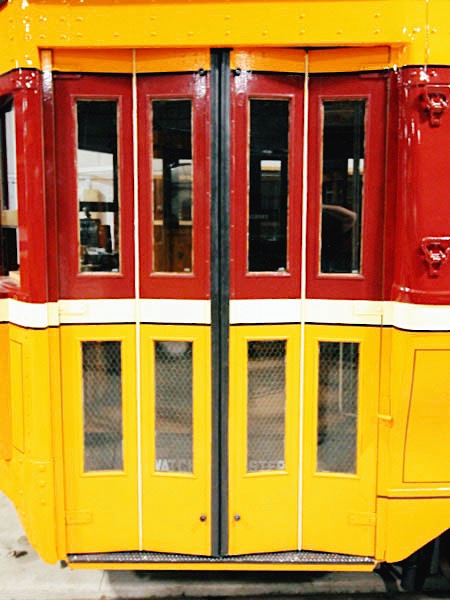
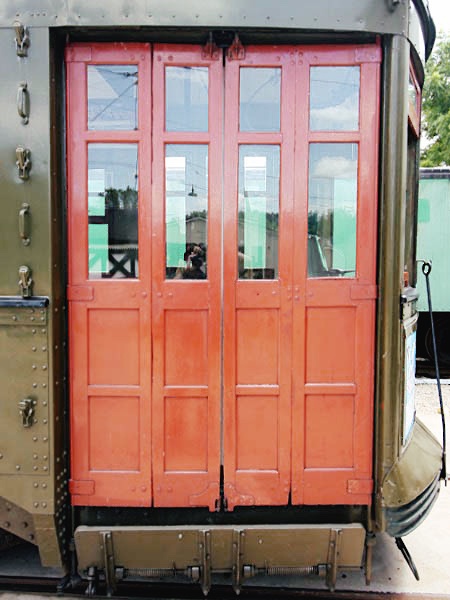
Accordion Ensemble
Jul 2019 / RWH

Service with a Smile
Washington, Pa / Jul 2019 / RWH
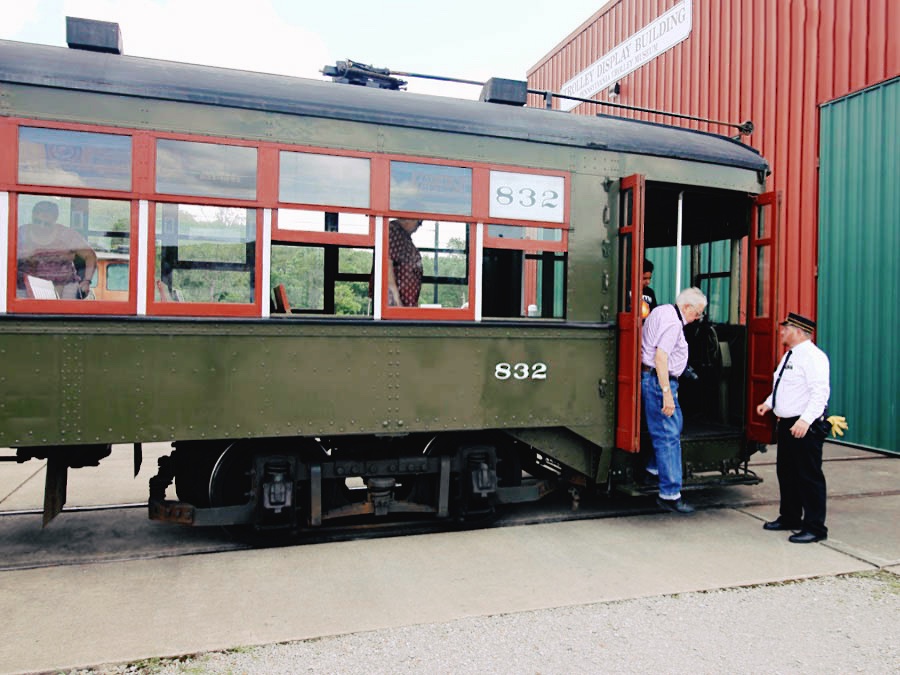
Pearly-Thomas Patronage
Washington, Pa / Jul 2019 / RWH
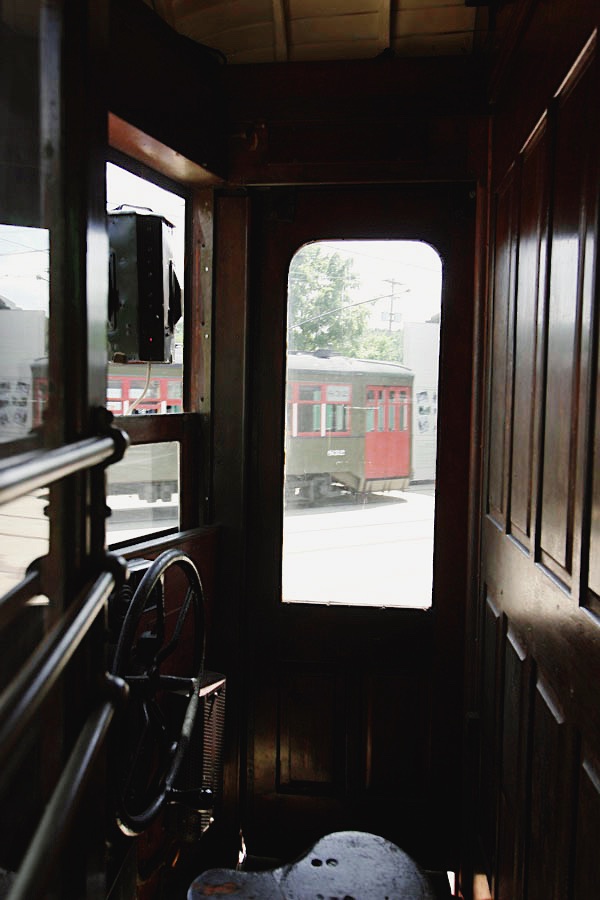
Our Southern Sister
Jul 2019 / RWH
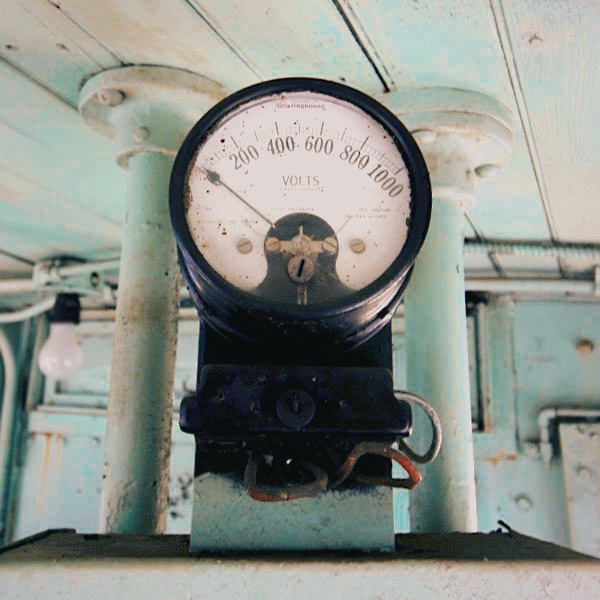
Westinghouse Wares
Jul 2019 / RWH
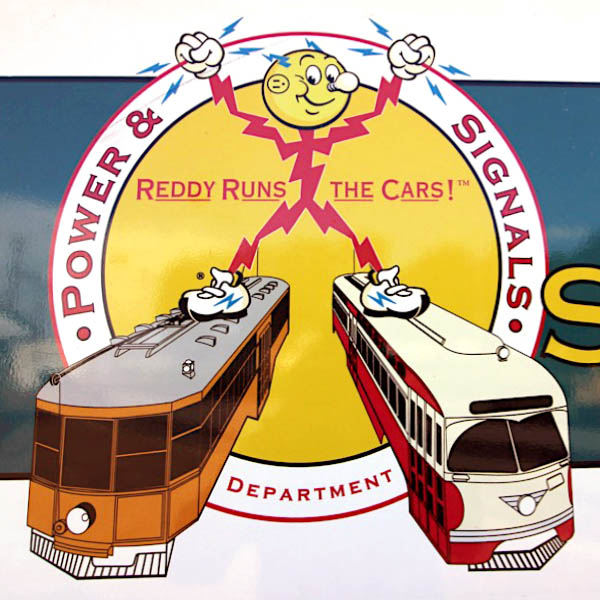
"Reddy Runs the Cars!"
Jul 2019 / RWH
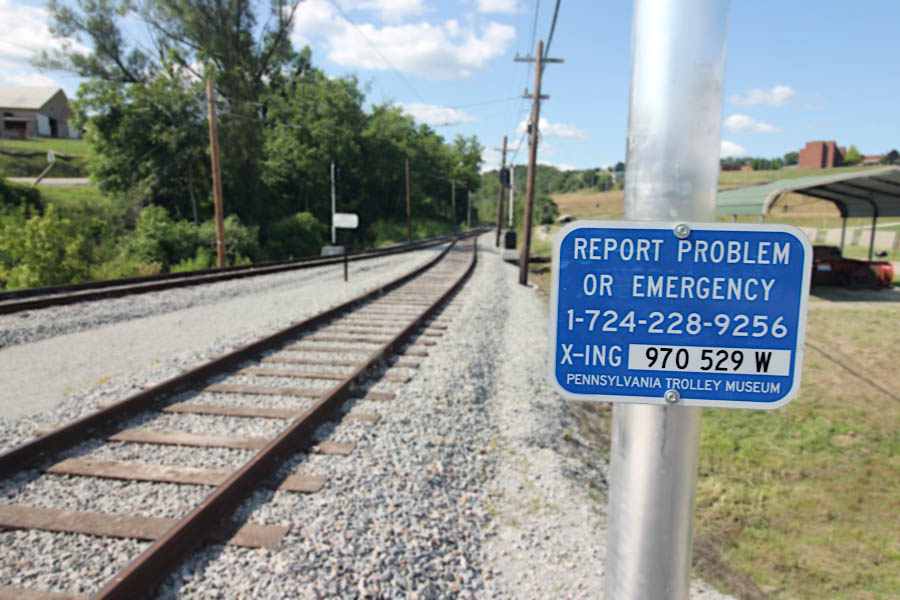
The Way of the Trolleys
Washington, Pa / Jul 2019 / RWH

A Machine for Moving Metal
Washington, Pa / Jul 2019 / RWH

Around Here We Take the Trolley
Washington, Pa / Jul 2019 / RWH

Onlooker
Jul 2019 / RWH
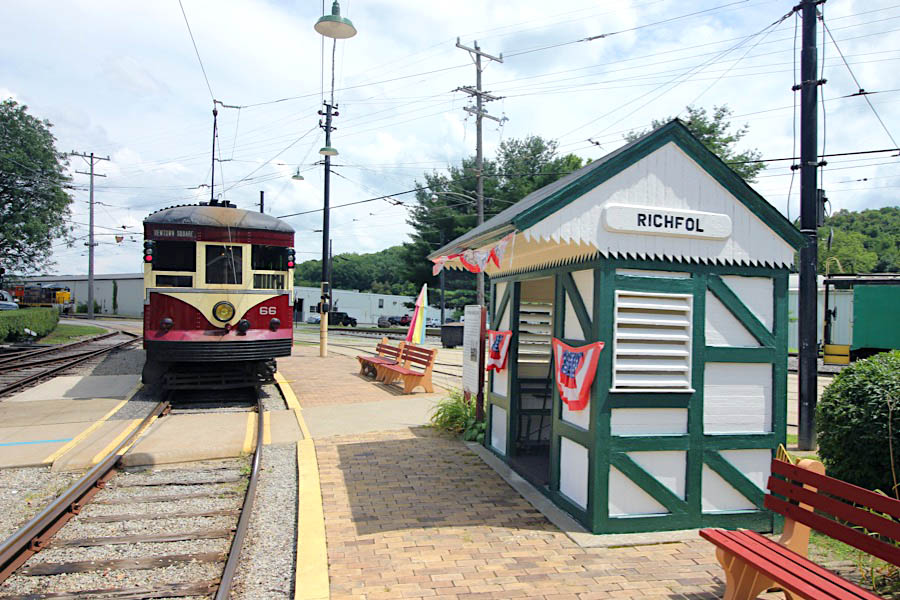
That's Richfol, with an R
Washington, Pa / Jul 2019 / RWH
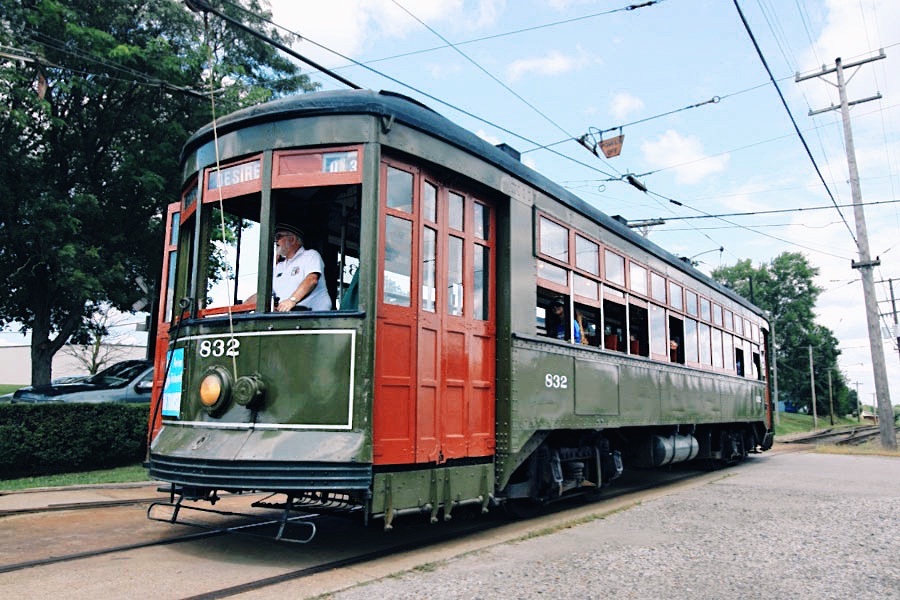
A Desire Named Streetcar
Washington, Pa / Jul 2019 / RWH
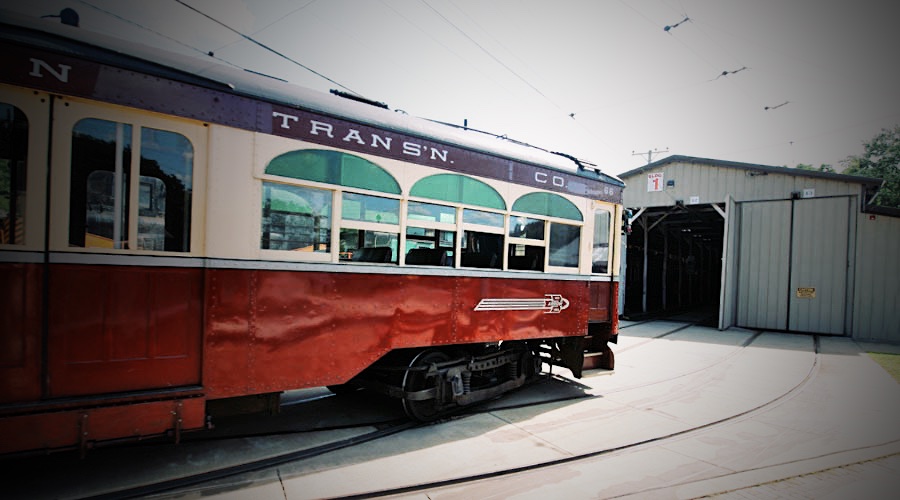
Another Day is Done
Washington, Pa / Jul 2019 / RWH
 Snapshots
Snapshots
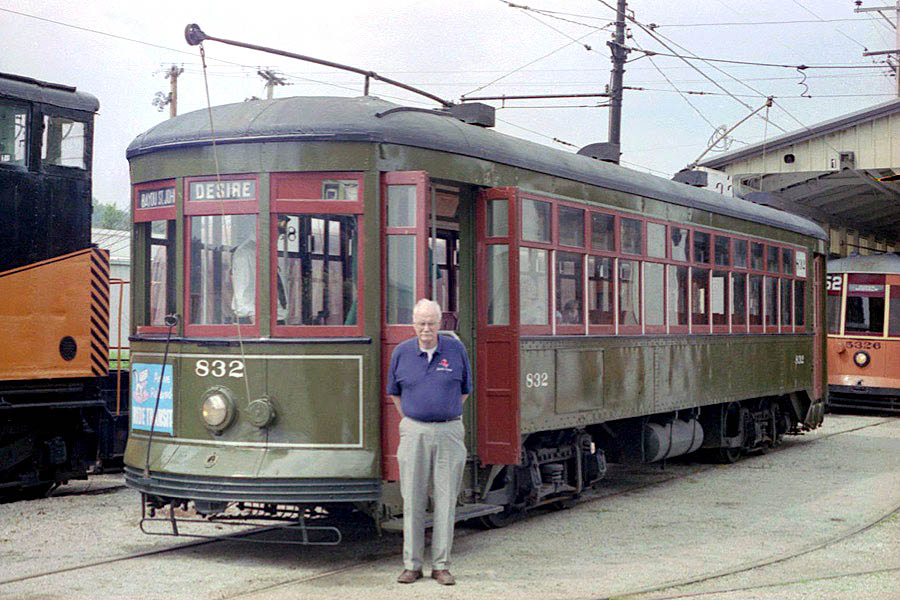
Washington, Pa / Jun 2003 / RWH
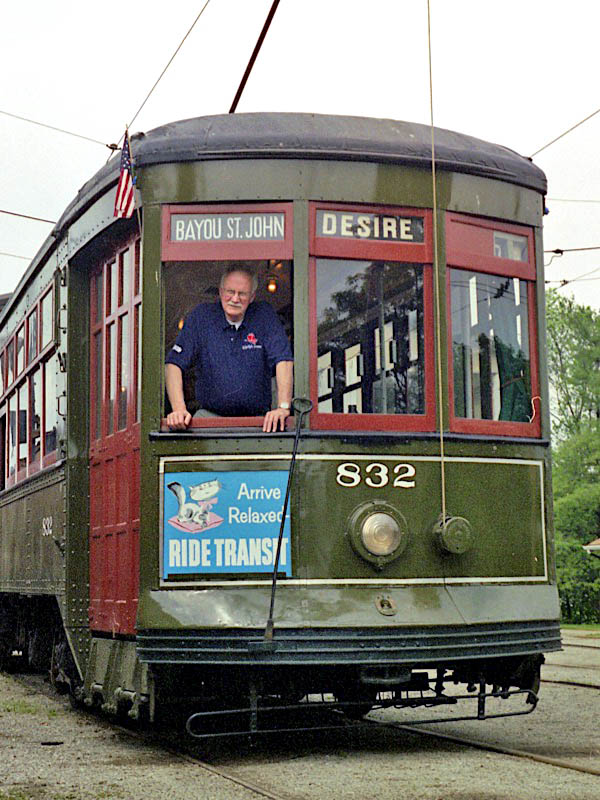
Jun 2003 / RWH
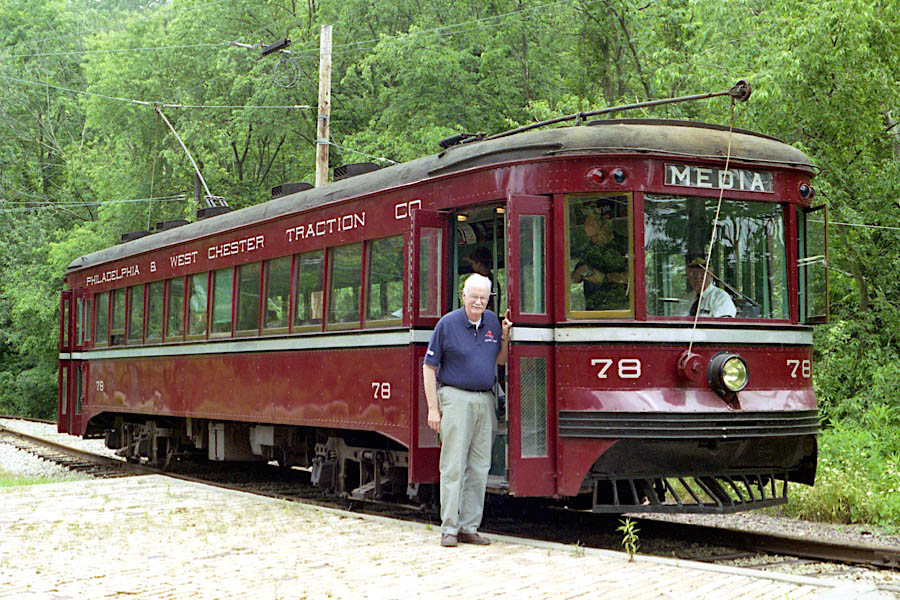
Washington, Pa / Jun 2003 / RWH
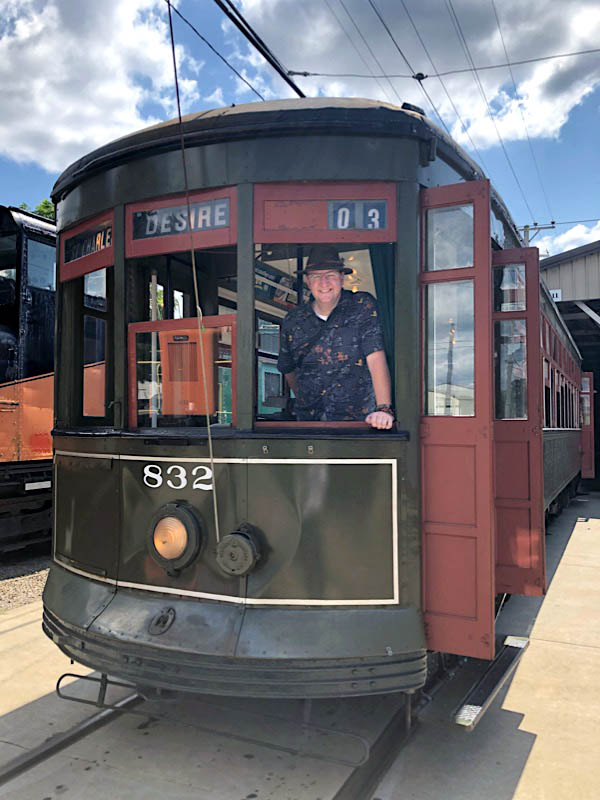
Washington, Pa / Jul 2019

Jun 2003 / JCH
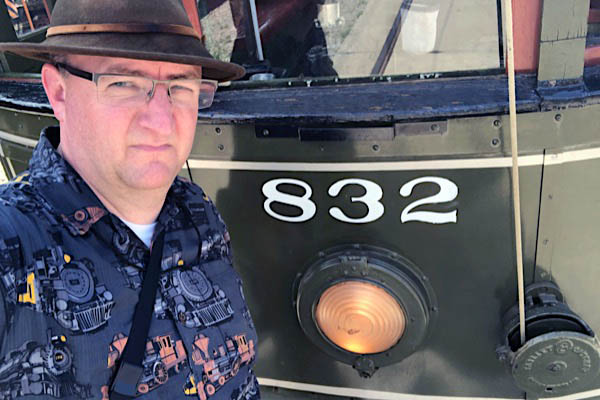
Jul 2019 / RWH
Links / Sources
- Pennsylvania Trolley Museum website
- Wikipedia article for Pennsylvania Trolley Museum
- "Old trolleys get new home" — Pittsburgh Post-Gazette
- VisitPittsburgh page for Pennsylvania Trolley Museum

